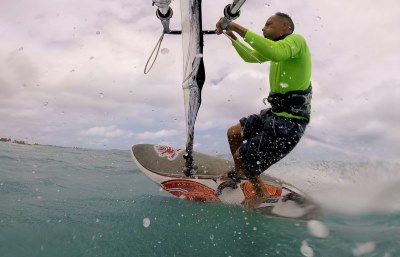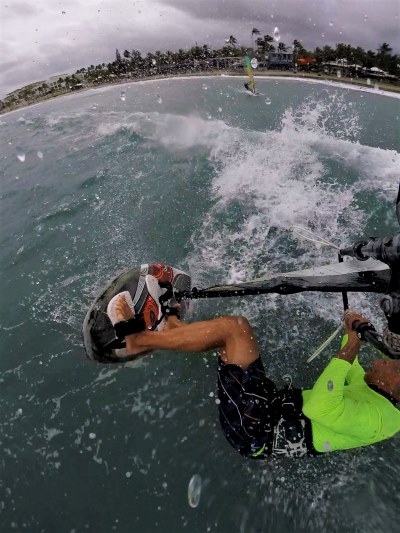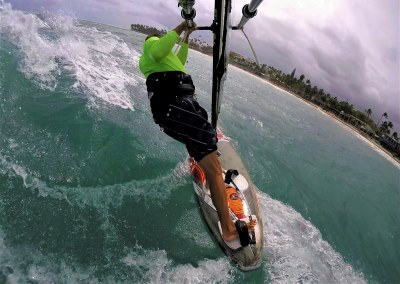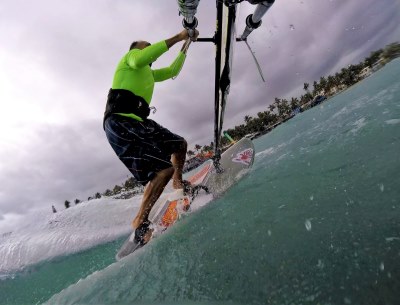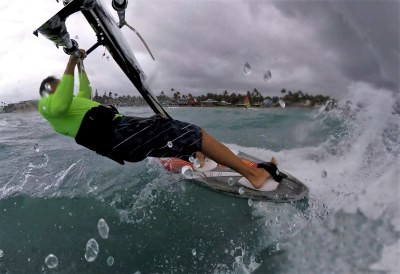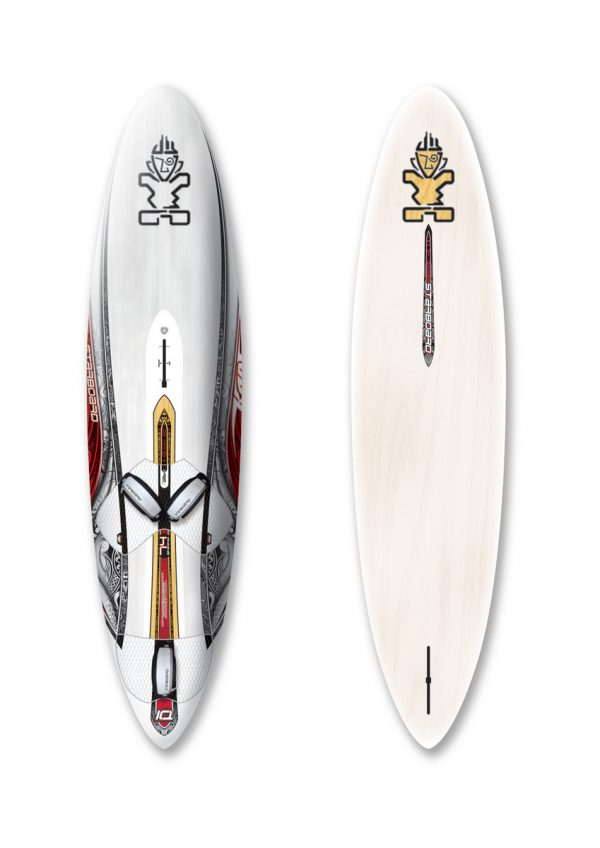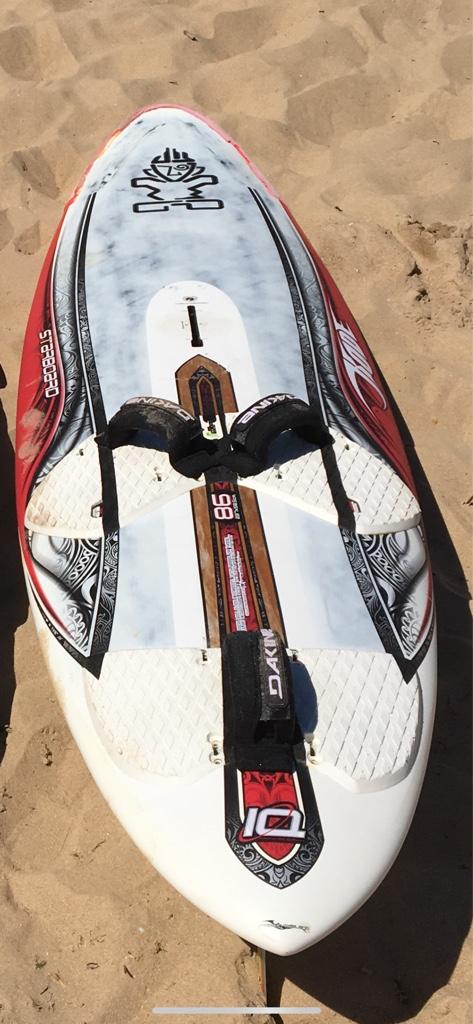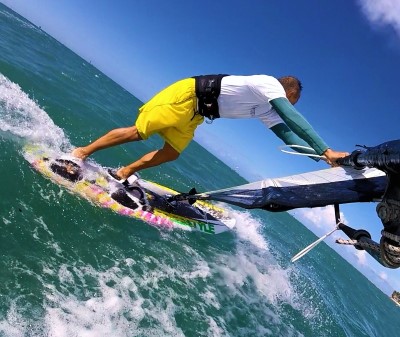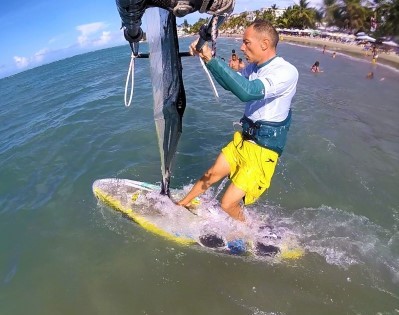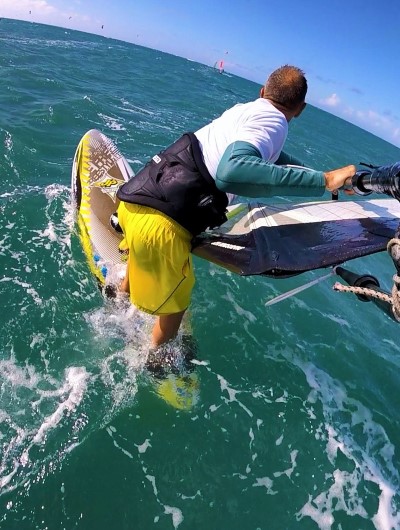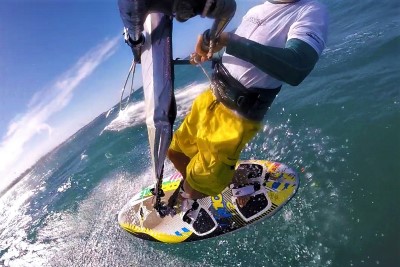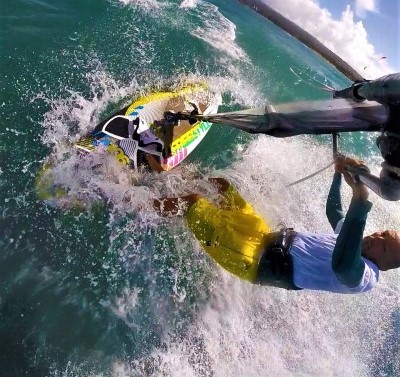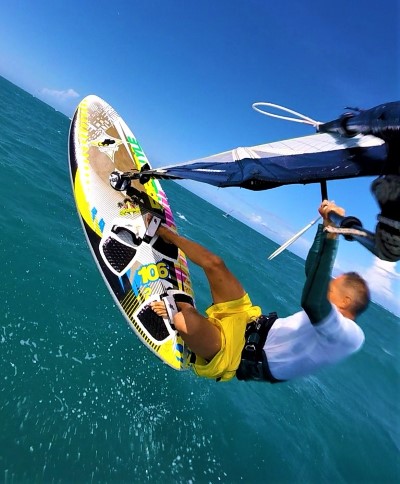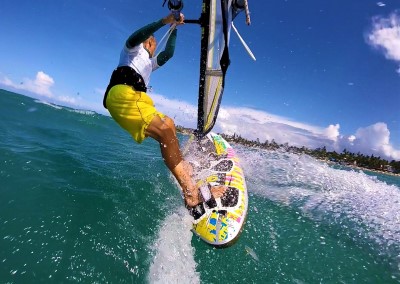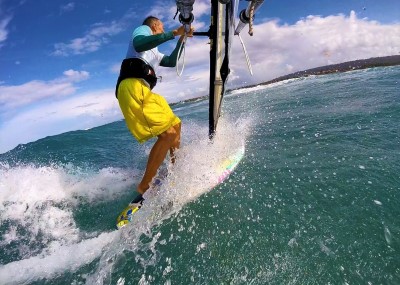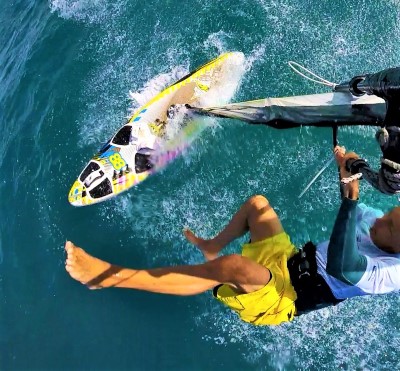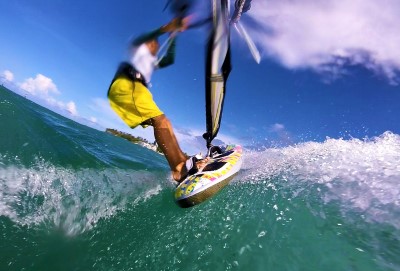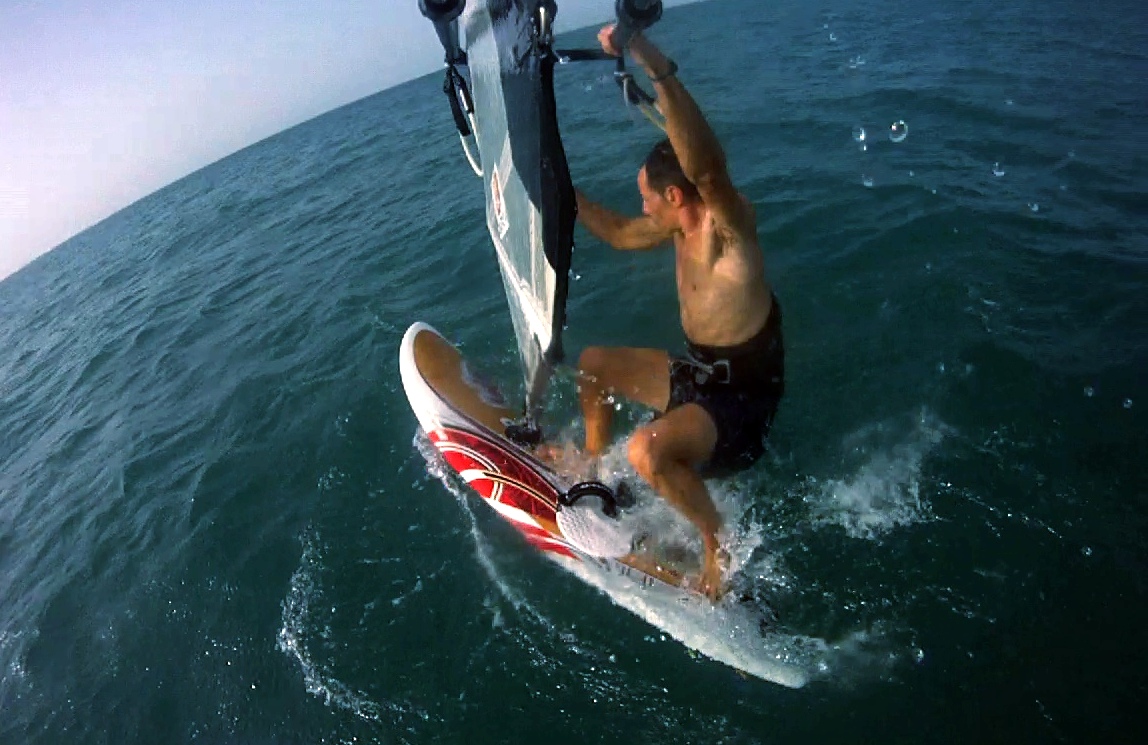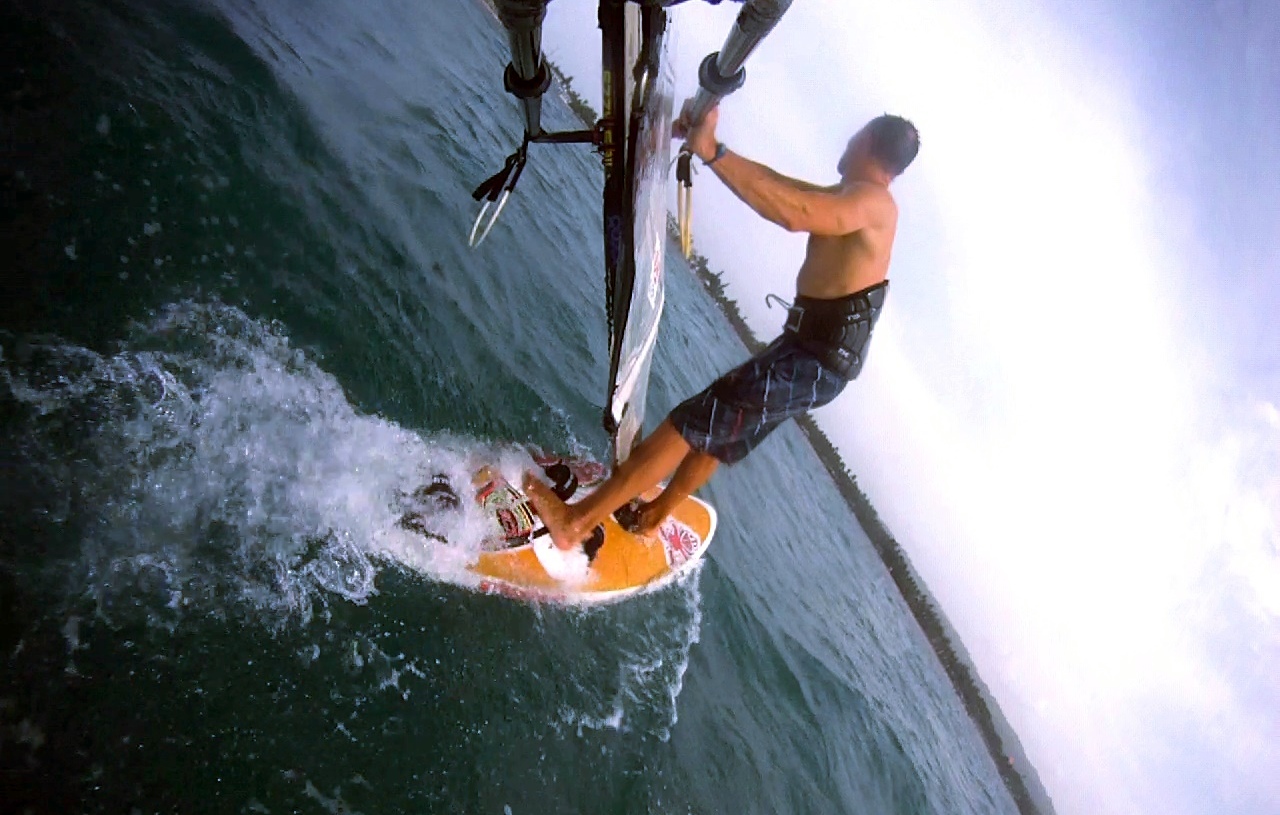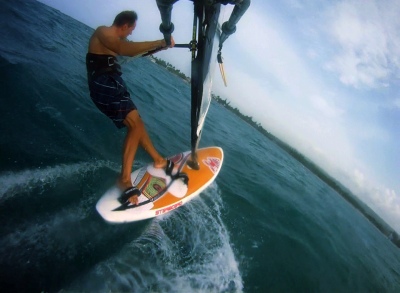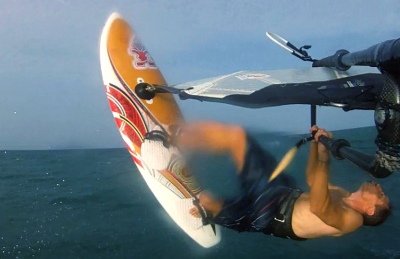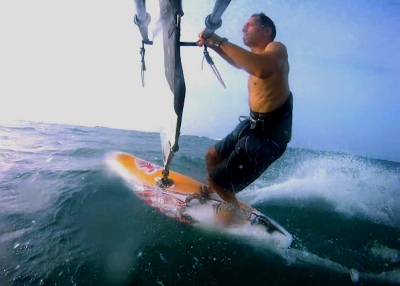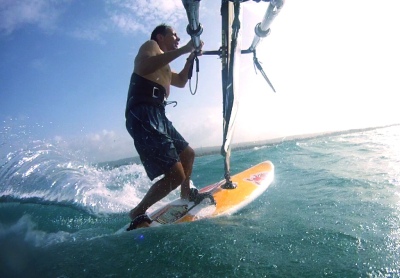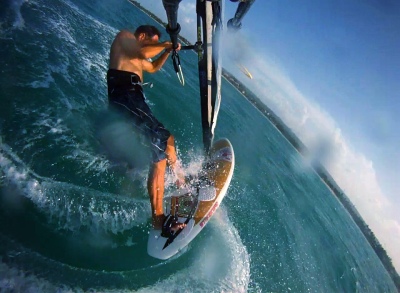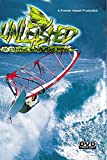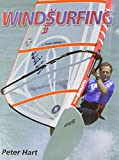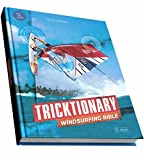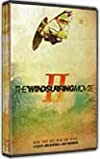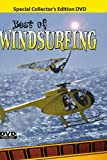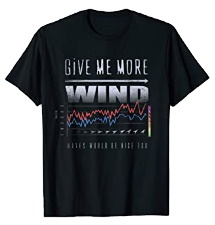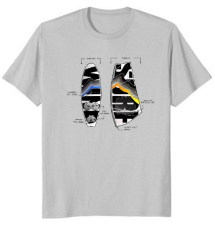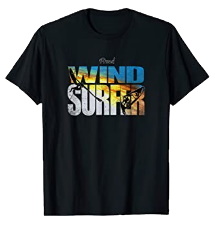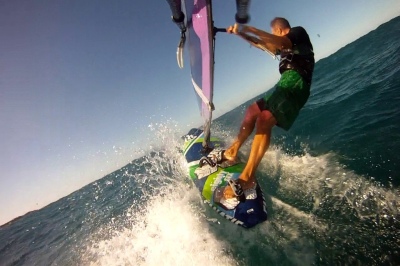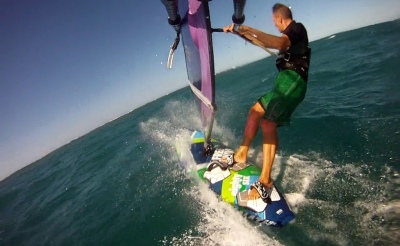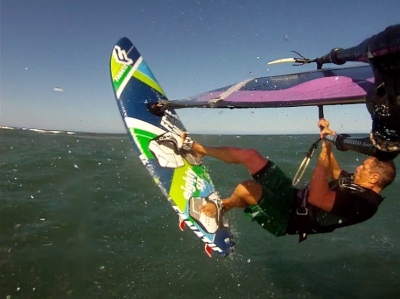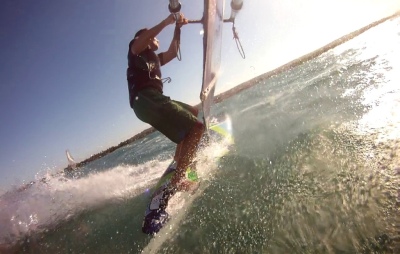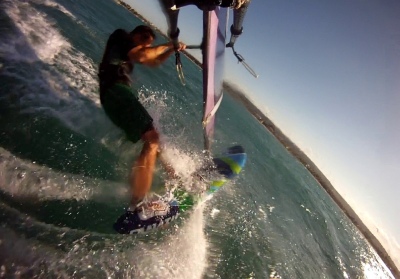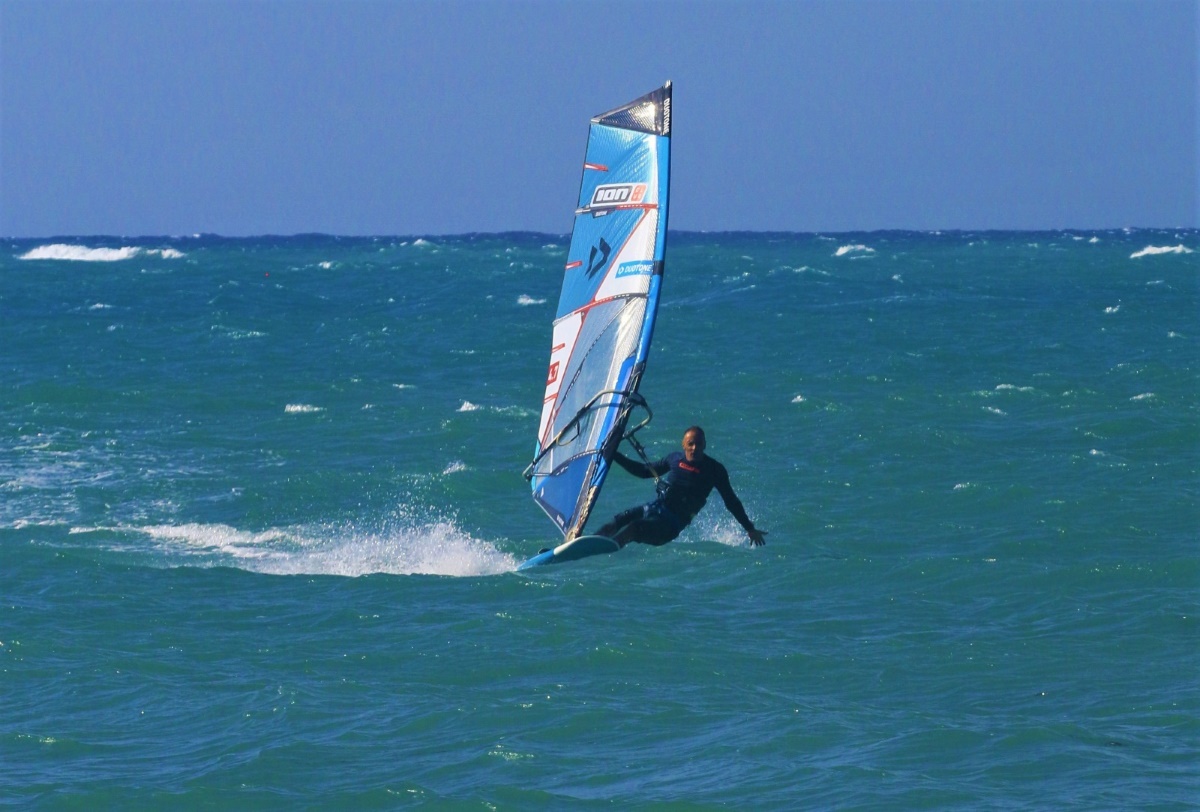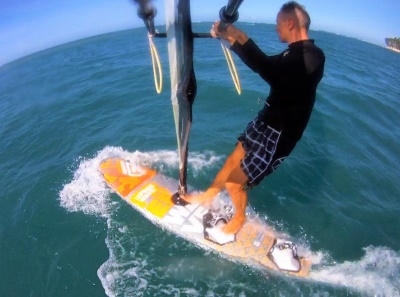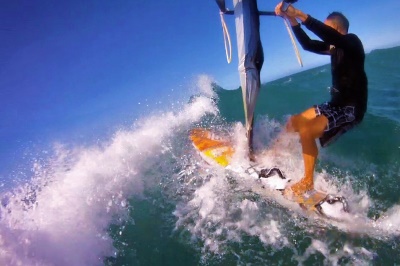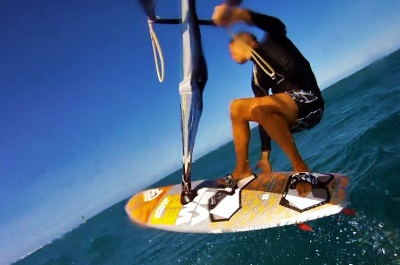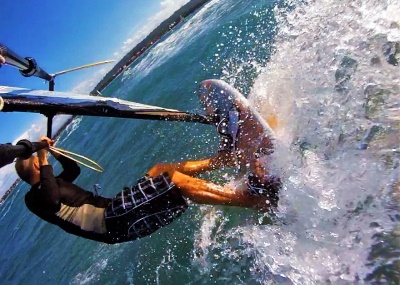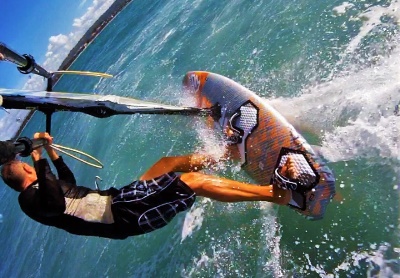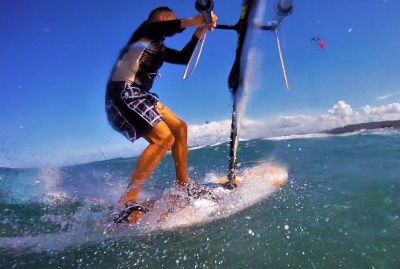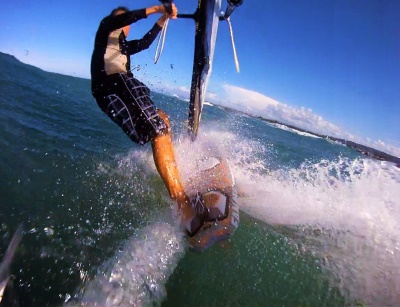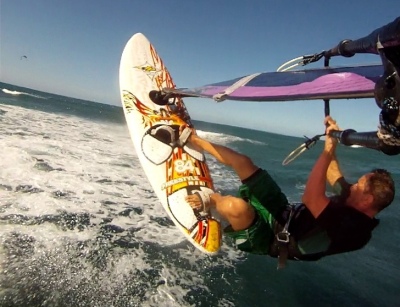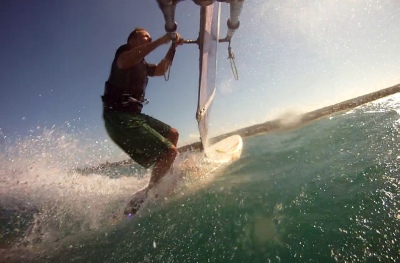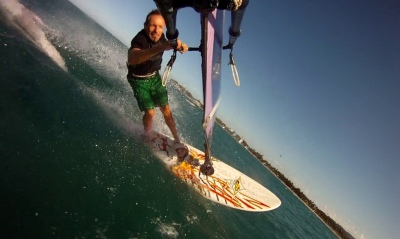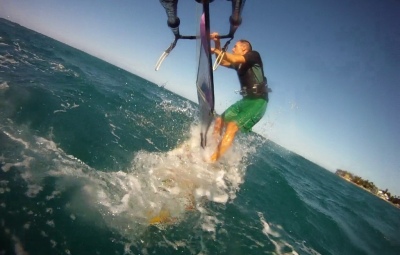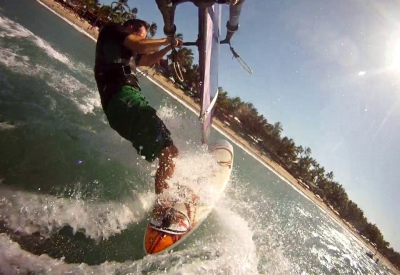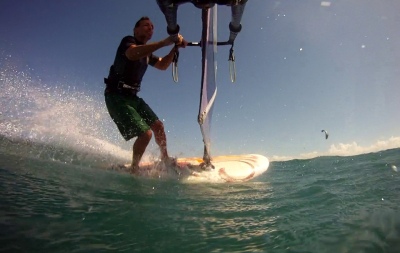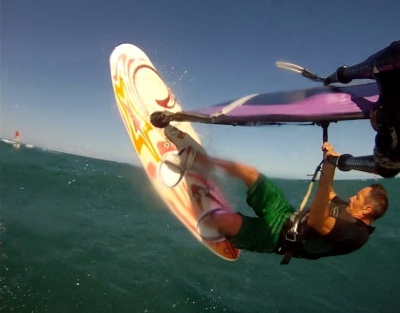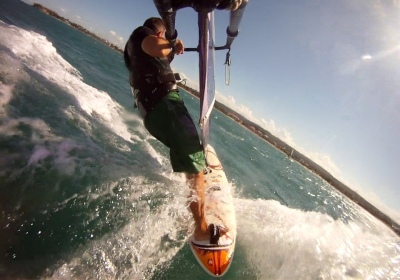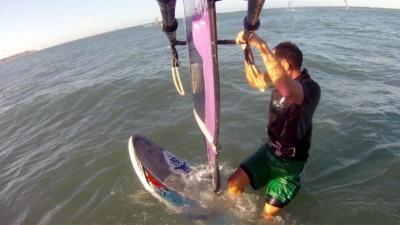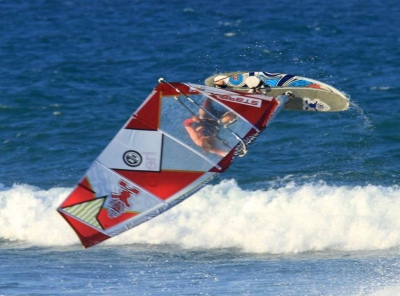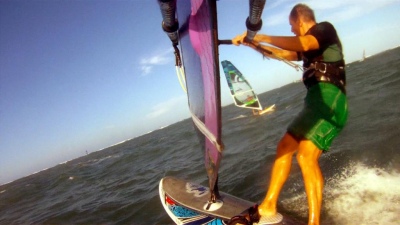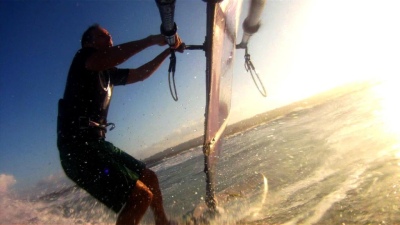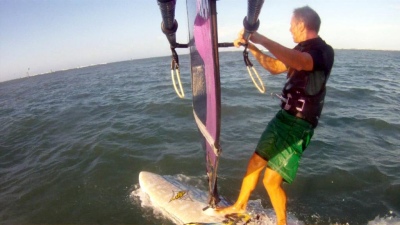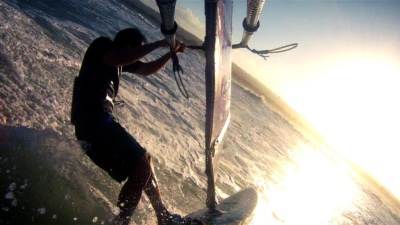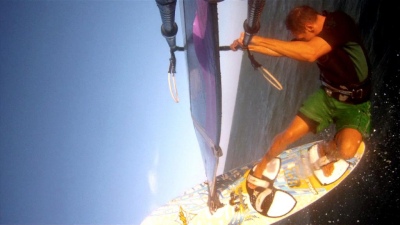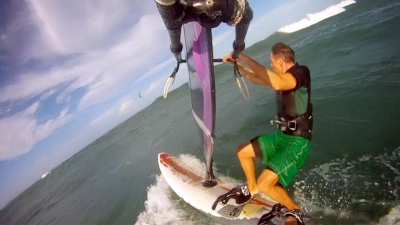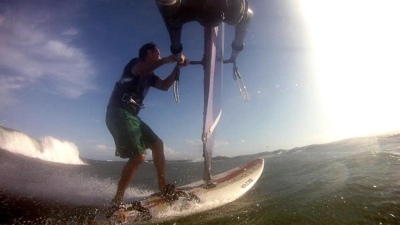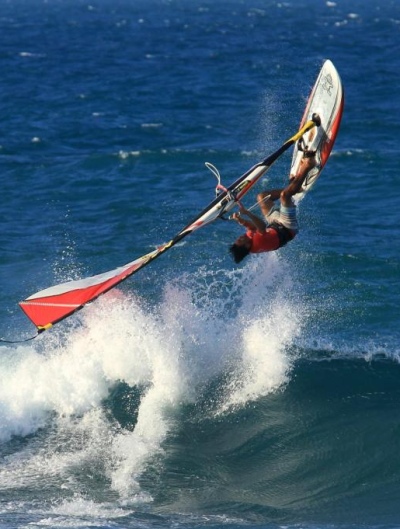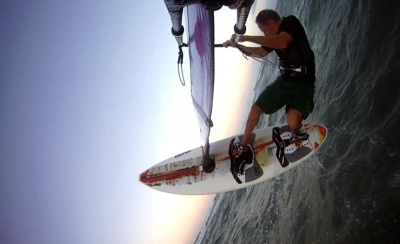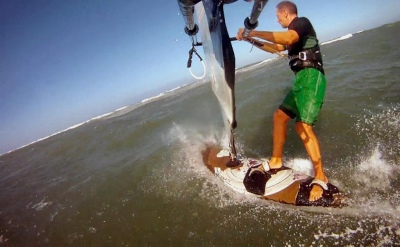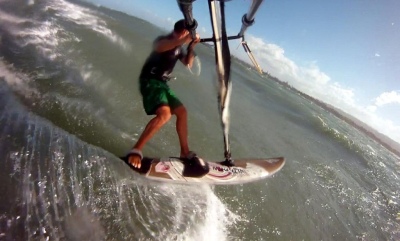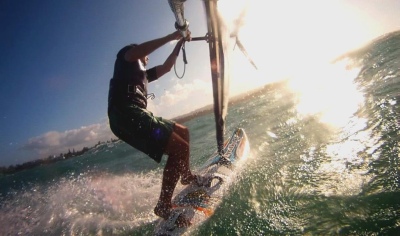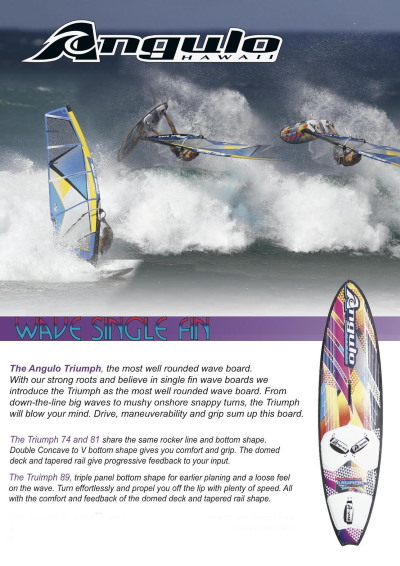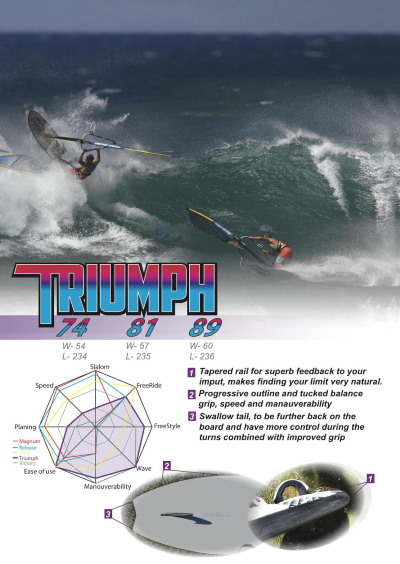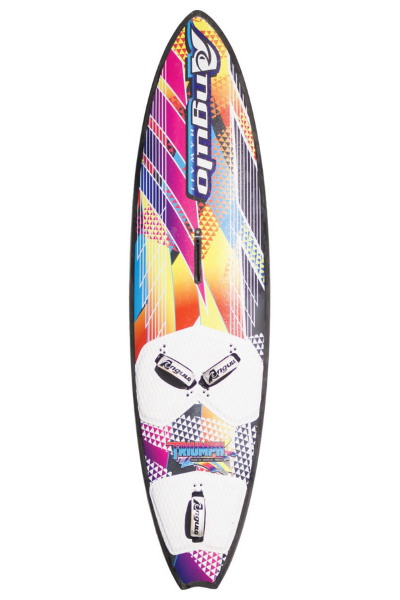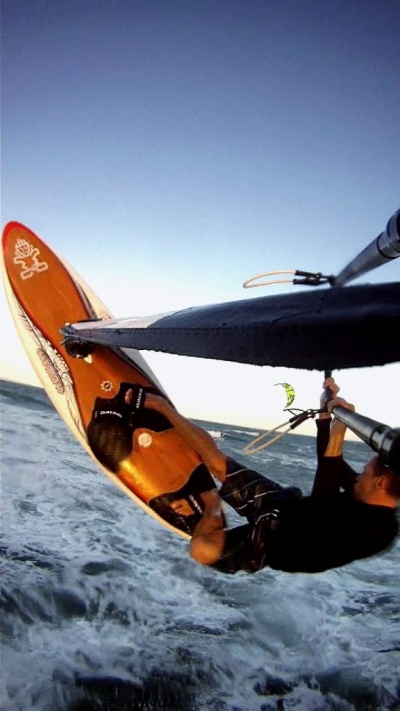Looking to update my boards at the time particularly for lighter winds and difficult conditions we can encounter here. Most tests were filmed with my GoPro Hero5 Session attached with their Roll Bar Mount. Without further ado, here are my tests of Freestyle Wave or Wave, Quad, Tri and Single boards! You may contribute by clicking the secure DONATE button in the header. Please do contact me with any questions.
|
|

|
Here are some of the products that I use and recommend:
BOARD TESTS!
Looking for gift ideas for windsurfers? I decided to start making my own windsurfing designs!
Check out my all new STORE page for more awesome products such as retro t-shirts,
hoodies, mugs, hats, and even home decor!
Each of the following models is available for women, men or kids in a variety of colors.
Please, do forward me your ideas or requests, I may totally create something for you.
Come back often for updates :)
View all designs in my store...
View all designs in my store...
2017 Tabou 3S 86L & 96L 59.5cm & 61cm top ⇧
General Comments:
Personally, I like the color and design of the board but feel like the nose is missing something, the stars and odd black line aren't my thing!
Clearly, they were into playing the stubby card. The 96 has cutouts near the fin box while the 86 is just flat.
The 86L weighs about 16.8lbs or 7,6kg fully equipped while the 96 felt a bit heavier around 17.6lbs or 8kg.
220.5cm length 59.5cm width for the 86 and 224cm long 61cm wide for the 96.
Weight balance is a little forward of the front straps on the 86 but a few inches more forward on the 96.
Volume is very evenly distributed on both except that the 96 seems to have a bit more up front.
Compare to the Fanatic Freewave STB, the rear of the board is narrower around the rear strap area.
Settings:
On the 86, front straps one hole from the front on the front and about mid point in the back which I felt like it could be more forward for my application.
On the 96, front straps middle front, back straps middle back.
Much like on most freewave boards I've tested straps positioning has little effect over how the board rides.
Mast track right in the middle which felt spot on on both boards.
Footstraps: Tabou, I prefer firmer straps, they felt soft to me and can grab when I'd prefer them not to!
They are comfy though similar to older style fanatic maybe a bit softer.
Fins: I used both with a 23cm strong freewave fin until well I lost it out on the reef!
Thereafter, on the 86 only, I used a thinner less powerful freewave fin but in 27cm. Curiously, it wasn't
an issue at all.
Slogging:
Both boards feel a bit bigger not in terms of volume which feels spot
on but in terms of overall dimensions. They feel like slightly bigger boards.
They slog by themselves with little input to correct board trim. They are quite easy.
The 96 bigger nose does slam into white water and you can feel like more than the 86.
Very little front and back correction needed, yet the board can easily pivot and correct trajectories.
The 96 is more subject to current and wave movement.
Planing Start:
Both boards take off in a very similar way, gradually and responding well to pumping with strong willingness to go.
They aren't as instantaneous as others maybe because of their control and comfort in the chop.
I felt like the cutout on the 96 hurt the responsiveness of the board to take off while the 86 was more
slippery.
Planing:
They are both equally directional, the wider tail provides lots of support without
being overwhelming. The longer rails let us crank upwind with ease.
The 96 does feel a bit long while the 86 more conventional.
The cutouts definitely make the 96 less sticky and feel lighter under feet, it's cool.
Chop:
Both boards deal with chop very nicely and feel safe.
They take some stress away when cruising around chop and shrug their shoulders when
running into water imperfections. Pretty cool and helps crossing poor waves too.
Jumps:
The superior control may feel like the pop is a bit underwhelming but these boards encourage
jumping. The 96 did feel its size or a bit more in the air while the 86 felt very comfortable and controllable.
Tail landings can be intense so better to get some decent angle with the water to soften the impact.
Jibes:
Could definitely feel the length and size of the 96 which needed strong pressure to turn.
The 86 however was quite different where I could really commit and even turn over the whole rail instead of
just pushing over the back of the board. I had no issue jibing over rough terrain.
Tacks:
Super easy, zero issues, both boards super stable both front to back and side to side.
Wave Riding:
The 96 felt big, like boat big and long, would only recommend for bigger riders. It was possible
to turn over the back foot and maintained good speed but my Goya 105 Freeride board (tested on this page)
felt much better in comparison. Definitely more freeride oriented. On the other hand the 86 felt
completely "tossable" to the point where I thought I was cheating! The wave came much faster at me
I thought. Well it was because the board maintained its speed and turned quicker towards the lip.
I tested it with both a 23 (strong) and 27 (weak) fin and it was the exact same thing.
I could turn hard, long, over the whole rail or just the back of the board and it would follow.
I'd say no problem until about 1.7m something like that. In side-on conditions more, side to side-off
would be its limit I'd think.
Conclusion:
It reminded me of the Fanatic Freewave STB tested on this page too. Fast, fun, reliable, with
a touch more true wave riding abilities. Maybe the Fanatic planed a little better, but the Tabou
had a softer touch. Definitely a great light to medium wind machine to make the most of the conditions.
In stronger conditions I'd recommend a smaller volume or a different type of board altogether.
2015 Goya One Freewave 85L 59.2cm top ⇧
General Comments:
The design is a bit edgy but quite nice, one must like yellow :) !
The outline looks nice and very smooth. The rails seem a bit fat around the mid-section.
I thought the front straps were close to the mast track on the Fanatic Triwave tested below but here they are even closer!
General stance is quite wide, see settings below.
The board is light (yes!) weighing about 13.5lbs or 6,15kg naked and 14.85lbs or 6,75kg fully equipped.
I hope it won't affect long-term durability.
227cm length with 59.2cm width.
Weight balance right at the front straps.
Volume appears to be gradually distributed with the tail thinning out nicely.
Settings:
It feels like the board is bigger than 85, closer to 90. Because of my lighter weight (150lbs/68kg) and the very
planted feel of the board, I moved the front straps all the way back and set up the rear straps one insert hole from the front.
The spread is quite wide for a freewave even with this setting which I actually like :)
Footstraps: MFC, firm but nice. They are like similar to Fanatic's but more squary feeling (which
I like) as opposed to rounded arches.
I didn't weigh them but while being firm they are also lighter which is fantastic.
Fins: The board was delivered to me with a 18 MFC central fin with 12cm "fatter" side fins.
Because this is meant to be a light wind board where planing is prioritized over wave performance, I used
my go-to strong sideon 23cm fin which I set all the way to the front for maximum looseness.
Slogging:
The board slogs like we're riding a cloud, very easy, very balanced.
Feels a bit bigger than 85.
Benefits from really moving the rear foot back to cross white water and press hard
to pop over. In the same time, placing the front foot in front of the mast track helps balance when nearly stopped.
While the nose is quite rounded, it's still pointy at the end which helps poke through sections.
Planing Start:
When first trying the board, I had set the mast track about mid-point and the board would plane off well especially
when applying lots of mast foot pressure hanging down on the boom.
Since I'm planning on using the board with 4.7 max, I set the mast foot a touch farther back and this has helped
getting planing without needing anything extra.
The board being light, it sets off on a plane easily and effortlessly. Also, being fairly directional, it
erases eventual footing mistakes or chop imperfections.
Planing:
Planing is easy and alive, despite the slightly wider width for a 85L board, the tail is playful and lets
us control the board trim and placement along the chop. It's not particularly high off of the water.
With the mast foot in the middle the board felt super planted which gives great control. While with the
mast foot set slightly back, it made it move lively with a bit great speed.
Chop:
The board feels stiff but in a good way, not too harsh on the ankles. The double concave bottom absorbs some of
the harsh impact that can cause bad chop. The pointy nose helps poke through sections while retaining good speed.
Jumps:
The board has a great pop with a strong reliable tail. I landed 2 out of my first 2 spin loops.
Backloops felt awesome, the board is so nicely balanced in the air. It feels smaller due to the weight distribution
being farther back, big bonus for me.
Jibes:
From what I can tell, the slightly thicker rail mid-section can make the board feel a bit bouncy over chop.
A bit similar to riding a bigger board.
However, it still has a secure grip that lets jibe over rougher terrain without too much trouble.
In fact, I was able to push really hard through high speed jibes and the board will still slice nicely through the water giving
a welcome sense of safety!
Tacks:
The reduced length is indeed felt when transitioning so tacks aren't as easy as on longer boards.
The nose won't sink though, it's just that it can be a touch squirmier.
It does pivot nicely to wrap heli tacks around and has great support when stepping around
during fast tacks.
Wave Riding:
Still need to explore this area a bit more especially around the bottom turn.
The board responds well to committed full rail bottom turns when the wave allows it.
It's less at ease when doing a sharp back foot hack to wrap the bottom turn and go vertical.
The top turn I find so far is better, with a real connection with the wave.
Super nice with the fin right below the rear foot, lets us achieve different
variations of top turns and aerials with speed.
Conclusion:
A very versatile well-rounded board, light, planes well, fast, yet holds its own on a wave.
I'm impressed and yet there's still quite a bit to discover as I get more familiar with it.
It's one of these boards that convince me that more recent boards can still deliver improved performance while
remaining light and well built.
Definitely recommend.
2013 Fanatic TriWave 86L 57.5cm top ⇧
General Comments:
The board is quite red :) with a touch of light blue. It has a rather old-school look, long and narrow.
Yet, the front straps are pretty close to the mast track. It weighs about 15lbs or 6,8kg naked and about 17lbs or 7,7kg fully equipped.
It's not that light given its smaller nature.
234cm length with 57.5cm width.
Weight balance is just a touch forward of the front straps.
Volume gradually thins out to a very rounded and narrow domed rear deck.
Both the front and the rear of the board are the narrowest of my boards from 77 to 87L.
Settings:
Front straps are a bit more forward closer to the mast track that on other boards.
It didn't throw me off when sailing. The spread is conventional I felt with not
that much volume overall in the tail area (expected for a wave board but worth noting).
Footstraps: Not present on the board, I did get to try them on other boards,
they are comfortable and light but too rounded to my taste not letting me grab the board with my feet
as I can do with Drakes or Dakine Primos.
Fins: With experience testing multi-fin, I was more interested in its
low end, planing ability, speed and jumps rather than its wave riding performance.
So, I set it up with a strong 23cm single fin. It comes stock with 2x12cm slot box fins and 1 US 18cm.
Slogging:
Definitely not a super slogger due to its narrow tail (and nose) and overall quite "rolly" nature.
Feels a bit smaller than 86 without sinking. Crossing white water is challenging.
It does benefit from moving the front foot forward of mast base at slow speeds.
Planing Start:
I was expecting a bit more go but the board takes some effort to take off when mildly powered.
It has a bit of a draggy feel to it even with a powerful single (see slogging section).
It's also perceptible when on a wave after the top turn sliding back down.
Planing:
Board is quite directional when powered with no foot bias, lets us relax both feet and hand grip.
It feels quite nervous, eager to go and high off the water.
Interestingly, it feels slow to go but fast and nimble once going.
Chop:
The board is pretty stiff and can be uncomfortable off of the chop but not overwhelmingly so.
The smaller dimensions makes it very easy to control trim and placement on the water.
It erases and is not disturbed by chop imperfections or small odd waves.
Jumps:
Backloops felt really good and easy to control due to the narrow width and smaller feel.
Makes them more likely to land. Forwards are more tricky as the board's pop is a bit underwhelming.
With enough speed though, it'll rotate nicely with reduced inertia on all jumps which is nice.
Jibes:
The board will jibe hard! Can really tighten up the turning radius.
It is easy to overturn and round upwind so one must pay attention to dial foot pressure and overall balance.
This correlates with the narrow dimensions throughout, definitely the most radical board I've ever tested.
Tacks:
The length does provide some welcome longitudinal stability. The nose resisted sinking.
They are definitely technical but not super hard.
The board will pivot super quick in moves such as the heli tacks, kinda cool feeling.
Wave Riding:
Wow! This thing is a true carving machine, really pivoty, very turny, it's quite amazing how tight the turns can be to stay in the pocket.
It feels really small under feet, very reactive.
Heading back down the wave, I felt like it needed a bit more push. I'd say that it prefers waves with a good kick.
It's very easy to control at all speeds, in all winds. There's a strong bite from the rail and it's forgiving to various body positions and even terrain imperfections.
Definitely inspires confidence to throw about and aim at most critical sections of the waves.
Conclusion:
It reminded me of the KP Pro board tested below
with its longer and narrower more classical nature.
The board feels pretty light on the water, build quality quite good.
I'd use it preferably well powered as surf sailing or underpowered conditions can be more technical.
So best for side to side-off conditions or at a minimum rigging to always have strong drive from the sail.
2018 Starboard UltraKode KP Pro Model 86L top ⇧
Thank you Franzi for letting me borrow your gorgeous 2018 Starboard UltraKode Kevin Pritchard Pro Model!
General Comments:
First off, the board is ultra light and really nice looking, 2 shades of blue, white with a
touch of orange, the board is unreally light 15.5lbs (7kg) equipped! Feels like an 80L board.
229cm length with 55.5cm width.
Weight balance is way back, centered around the front strap besides being set to its farthest back position!
Volume seems to be spread out evenly as far as thickness goes.
Rails stay parallel throughout most of the shape.
The nose is super pointy and thinner.
The hull shows a deep double concave which stretches quite far along the shape.
The board has some tail kick but an overall fairly mild rocker.
Settings:
The stance is massively wide!!! They made zero adjustment for the average rider
that's for sure. Even with the front straps all the way back and back strap forward, the
stance was still super wide. Who could ride it with straps fully apart? A 7'-tall person?
And it's not something that I would get used to, definitely
only recommend for riders with long legs.
The mast track is very close to the front straps (even with the straps set back),
probably the farthest back of any model I tried. So, it's an old school board but with
a mast track set quite far back, cool!
Footstraps: Really nice premium straps, super light, super comfy, great support,
some of the best ones I've ever tried. Do want!!!
Fins: The board comes with a nice thruster set from MFC.
One 17cm center fin and two 11cm side fins.
Little adjustment on the side fins, some with the center fin.
Possible to ride as a Quad, Twin, Single or Thruster!
Star Box (also accepts slot box fins) on all four and a US Box for the center fin.
Slogging:
It does feel quite small for sure, it rides a bit lower than wider boards of similar volume.
Its evenly distributed volume does help slogging balance.
Plus, its pointy nose opens up a path through white water letting the board travel a couple of feet
farther out than shorter more rounded boards.
Planing Start:
A bit low on the water due to the low volume feel (I'm 67kg/148lb), it takes a bit
more to release than a more usual (read wider) 85L board. However, its light weight and flatter gunny
rocker does help transfer sail power into speed quickly so it still planes easily.
Planing:
Board feels very directional with good drive from the fins.
I noticed some slight whistle at times similar to the fins on the 2020 Fanatic Freewave.
Interesting to note that both use MFC fins!
The board feels pretty quick, in a way it reminded me of the Tabou dacurve 2007, light nimble directional with fast planing.
Chop:
Well, the board is stiff, possibly the stiffest I've ever tested.
So much so that I was afraid to jump it, really. It definitely could use more padding to soften the ride.
I wouldn't want to land this one flat that's for sure!
Otherwise, the narrow nature of the board and friendly nose make it easy to zoom around chop without any issues.
Jumps:
The pointy nose is wonderful to poke through white water and nose dive jumps were the smoothest I've ever experienced.
Definitely recommend for huge backloops!
Jibes:
The board gives a very safe feeling at the jibe. Because of the wide distance between the straps,
it feels like there's a lot of room to place our back foot on the side of the board when turning.
This lets us play with different footing depending on the type of turn we want to do.
Tacks:
The nose is pointy but there isn't as much volume up there as one would think. This coupled with
the fact that the board is narrow makes it medium friendly for tacks.
Wave Riding:
Most definitely at its best in powerful 1.5m+ waves, the board has a magic
front foot bias bottom turn bite and pivot. It feels very secure and is quite
something to feel the board rotate around over the front foot. Something I've never
experienced to such a degree.
Top turn felt a bit stiff, possibly because I moved the rear strap forward to reduce stance width?
It may also tell me that it's not a backfoot board for quick turns in more onshore conditions.
I would definitely say that it enjoys dropping down fast in complete control and execute some
proper power turns!!
Another interesting point was that the board felt really nice when carried by powerful whitewater after a wave ride.
It stayed composed and was easy to trim to stay balanced. Again, something I've never
experienced before. There's some magic built into this board that makes it unique.
Conclusion:
A high-wind board to stay in control and shred powerful waves.
It can handle bump & jump conditions but I'd recommend something with more dampening for
rough choppy waters. Great for nose-dive jumps, fast and very light under feet.
Tall riders only or riders willing to have an extreme wide stance.
Now I want to try Boujma's pro model!!
Starboard, pretty please, could you send me one to test :))) ?
I'm sure it'd be a greater fit for our type of conditions and for... me!
Looking for gift ideas for windsurfers? I decided to start making my own windsurfing designs!
Check out my all new STORE page for more awesome products such as retro t-shirts,
hoodies, mugs, hats, and even home decor!
Each of the following models is available for women, men or kids in a variety of colors.
Please, do forward me your ideas or requests, I may totally create something for you.
Come back often for updates :)
2020 Fanatic Freewave 85L & 95L top ⇧
Thanks Oli, from ION Club Cabarete, for letting me borrow his 2020 Fanatic Freewave.
First off, the board is beautiful, Team Edition with blue and orange colors, nice pads, quality fins, and great straps, very light.
Now, onto the remaining 10%... ;) !
General Comments:
For this year, volume appears to have been distributed farther forward than on previous models (see photos).
Compared to the 85 (58.5cm width), the 95 (61cm width) has its extra volume added from right in-between the straps to before the mid-nose area.
Instead, on the older 96L model, volume was evenly distributed throughout the whole shape.
The rails seem thinner on the 2020 model, and the tail quite a bit shorter.
Both changes confirmed the nose-heavy feel I had when lifting if off the ground by the front strap.
I was a bit surprised to notice this for a freewave board, maybe it's for increased wave performance?
Apparently, the 75 and 85 are more wave-oriented and the 95+ more focused on planing / bump & jump.
On that note, the 85 does seem to have a curvier nose while the 95 model shows a straighter mid-section shape.
The board also felt somewhat longer and narrower as whole. When comparing it with the 2014 model, we can see that there's
quite a bit more "board" in front of the mast track on the 2020.
This, coupled with the wider nose and more parallel front rails confirm the long nose feel.
Settings: Pretty much all dead center, stance was perfect, well-balanced.
The mast track sets farther back towards the straps compared to the 2014 model.
What's interesting to note is that on the 2014 model, I did feel like it would benefit from being farther back so it makes sense to me :) !
Footstraps: Premium available with the TE model, they felt really nice, comfy, a bit of stretch, set wide open, no issues.
Opening possibly a bit narrower than Starboard for example. The stance seems to have widened compared to previous Freewave models (see photos).
Fins: The Team Edition comes a nice quality MFC thruster set of 19+12s, no adjustment out back, front fins set forward (drive).
The fins felt solid with a firm grip while remaining loose enough for fun tricks.
Slogging:
85 liters felt spot on. Fanatic seems to have very consistent stated volumes!
Tacks felt super easy and slogging over waves and whatnot was fairly straight forward.
Yes it's only 85 but it's worth to notice that there isn't that much spare volume in the back to recover from sinking
as volume has been moved a bit more forward. It does have a near 100% conventional feel though, nothing odd or different.
Planing Start: Planing release felt similar to both previous classic and stubby versions, progressive & secure.
Planing: As soon as I got on a plane, I noticed... a low-frequency whistle. Not sure which fin(s) was responsible for the noise and wonder
whether they are all like that? It does it even jibing at low speeds. It's not super loud though.
The board feels very directional, very easy to sail no matter the riding style or weight distribution, it'll keep gliding.
Fairly smooth, low on the water, no spin out issue with strong bite from the fins.
Again, a true conventional feel. The stubby version was pretty amazing at gliding through lulls, I'd say it was the best out of all three.
For top speed the classic wins, 2020 second and stubby third.
The board is so directional that precise rail-to-rail trim isn't as responsive as others. On the other hand, its friendly more conventional shape lets us
shrug off water imperfections anyways. I have to say similarly to the stubby version. Finally, on a somewhat lighter day, productivity was on the high side!
Lots of planing and jumps.
Chop: Friendly in chop (nose and rail gently glide off), the ride is comfortable, improvement over 2014 Classic for sure.
Requires little to no input to keep the plane. The construction also cushions hard impact. I'd say the later JP freestyle wave wins the comfort battle
but the Fanatic does a nice job.
Jumps: Some people are looking forward to their first jibe... I was looking forward to my first forward loop :D !
Given the lighter winds, I was happy to even try some. I believe I landed one out of a few. My lack of technique and wind, more than the
lack of pop, is probably to blame though.
I was expecting a bit more pop from the board, in that regards it felt similar to the 2014 classic version although I was using 85L for conditions that
were calling for 95L.
I remember feeling very comfortable with the stubby right away, with this board, I needed to get a bit more time with it to unleash 100% commitment.
Backloops felt a bit harsh. It's a bit hard to explain, I felt the same with freestyle boards, my Tabou DaCurve is a bit like that too. The pop is
feels more like a sudden slam than a smooth release.
Jibes:
I pushed the board more and more into jibes. Its friendly rail slices through the water and inspires confidence jibing over rough terrain.
Also, we can really push over the back foot to maintain the plane for a longer time out of the curve. Then, the directional stability comes into play to get planing again.
Tacks:
Really easy with the volume being farther forward, the mast track back and the nose staying wide through a longer section.
Hides awkward footing.
Wave Riding: On my first bottom turn I purposefully sailed it like a true wave board, and all of the rail sunk in the water as if it lacked buoyancy.
It bogged down a little, nothing major, but it was certainly not its preferred type of turns.
On the next ones, I took care to maintain more weight over my back foot
(like on a jibe) and was able to keep good speed through the turns. The top turn was really nice, very smooth, perfect release, I was impressed.
I'd say that it felt more conventional than the skatey stubby version for sure.
Backside was really good! Lots of speed and drive, strong pop, the board really liked to be tossed towards the lip. Pretty cool.
Conclusion:
I preferred it over the former classic version, I felt like it was lighter, smoother, more error-erasing and without surprises on a wave.
Besides the directional feel, I didn't see much stubby in it. Maybe the longer/wider nose? I did like the stubby it was surprising, super
skateboard-ish, reactive, quick tight turns, needed a bit of adjusting maybe? Some people preferred riding it as a single, it would definitely
free up the 2020 model as well for a faster, peppier ride.
This test will be edited in the future with more findings and action shots.
I plan on tweaking a few settings to see how they influence its behavior.
More to come :) !
Some media suggestions on the extreme subject :)
2013 Starboard Kode Wave 87L top ⇧
Target: A 10 to 25-knot do-it-all machine with early/easy planing but decent-to-good wave performance. Jens from Vela Cabarete let me try his former
personal board as luckily it was exactly the board I had been looking at while researching online.
Settings: Front straps middle, back strap all the way back. For a lightwind use and my height (1m73 / 5'8"), I immediately noticed I could use the
back strap farther forward. Also, it'd help to have more volume below my foot for more efficient planing.
Fins: Stock MB 17cm, firm, good drive, communicative release. As I moved the back strap forward, I also moved the fins forward.
They are 1cm off of the front. This was to help wrap up the bottom turn when wanting to go vertical on a wave.
Footstraps: Comfortable although a touch on the soft side. They are a thinner maybe lighter version of Dakine Primos.
After a few sessions, I noticed that the top "leather" part was too wide. The edges can be felt when curling up the toes or getting pulled out
of the straps. Also, the rear non-twist washers sit pretty high and can be felt on the inside of my foot (I have flat feet).
I understand and love those washers for a single screw application but it may be overkill with the two-screw insert which is the case
for the back strap.
Slogging: Volume very evenly distributed, the board doesn't nose dive under heavy footing, nor does the tail when beach or water starting.
It's wide but pivots nicely and small trim adjustments are easily made. It also stays composed and gives time to adjust footing when needed. I used it all
the way down to 10 knots and it's been perfect for my weight (70kgs/154lbs).
Planing Start: The board glides very well. With the 5.0 (target sail size) one pump and the board is off. It slogs really well.
The fins won't produce their full drive until the board is up to speed. It's possible to use the volume and rail to head upwind if needed. The board has lots of
support below the mast foot so it's really nice to drive the sail power onto the mast foot and have this platform to lean on and generate speed.
It's fairly directional not so technical to slog and pop off to plane.
Planing: The board just wants to go, it's a nice feeling. In light winds, the board will keep gliding until it drops the plane,
it doesn't feel like it slows down like some wave boards. The board has nice buoyancy that can be used to pump the board, a bit like freestyle boards.
It feels like it's always there even at low speeds (nice for low-speed bottom turn or maintain speed at the jibe). It also feels small in regards to
maneuverability so it can steered and controlled through chop with ease. The rail-to-rail and front-to-back trim is easily adjusted.
The fins provide near single-fin grip and torque, remarkable.
After a few sessions, I have noticed that upwind ability under moderate-to-light plane
is not as efficient as a single fin (although not surprising). So I found myself taking out my back foot out of the strap to
put more weight forward and point higher. It's not so much of a problem when sailing around the break, I only
noticed it when heading back and having to point as high as possible which is usually with the wind dying too.
Jibes:
On my first jibes, I noticed that I could push down harder, I could feel the volume under my back foot. It may be a more upright style to turn than
on pure wave boards. There's a "pivotey" feel to turns in general. Now with a few more sessions and great confidence,
I can really push on the rail and get the board to turn hard and maintain speed. Planed out of lots of
jibes in choppy conditions. Also, the end of the jibe at lower speeds can be finished off pivoting which is nice.
The nose clears the chop nicely, it's a safe board to jibe in any condition. We truly can get away
with too much back foot pressure and not lose speed (same is true for the surf).
Tacks:
Really nice to tack wow, can recover bad footing easily, the board is stable in all directions and gives plenty of time to correct errors when needed.
With a few more sessions, I can hop over and plane backwinded for a bit, it's an incredible
feeling and the board makes it easier.
Jumps: On my first session I was very comfortable with it and tried backloops right away. I was very close to landing a few despite
the technical choppy conditions (onshore). I noticed the soft nose-landings, it feels well balanced in the air.
With more jumps now, the tail is well done, landings are quite soft and possibly softer than my Quad even.
Maybe the fins let go a bit more, regardless it's not harsh on knees or ankles which is important over here
as the water state can change suddenly and we cannot always control the exact angle when landing.
Chop: The Carbon construction makes the board really stiff. On my first session, it did feel quite harsh. I tried to use the
rails a bit more the soften the ride. I believe moving the back strap forward help with better controlling the trim. Water state was the worst
that we could have. With more sessions now, this was definitely water state related. No problem at all with the harsh ride,
maybe even quite the opposite, the length of the board distributes the load and the board flexes just enough
to absorb the impact of those small flat hits when sailing across chop. I read that later models are even
more confortable, that's good but if this year is faster more responsive, I'm happy too :D !
Surf: So far it's been quite fun, I tried a few Takas on it. I was surprised and happy to feel that the board responded well to
subtle input. This makes it convenient to change trajectory when going up a wave. It also felt like I was hitting the wave with more energy,
it could easily bulldoze into and over the white water, lots of float and projection.
Wow, yes with a few more sessions I can
say that the board is like cheating! It's not the sharpest turning machine, but at the bottom turn I can pull away from the
peak more (to gather more speed) and then head back towards it and accelerate as doing so. I found that I could
accelerate even after the bottom turn. I don't think I've ever done this before?
It even surprised me a bit getting late on setting off my top turn :D !
Also, there's good projection so it'll want to surge up on the slighest wave.
The balance over the white water is very easy. It's also forgiving regarding footing so I can press hard on my front foot
or back foot and the board will be like "ok I'm fine with it!" Somehow it doesn't seem to
"trip" over a choppy wave face. The fins may give a bit though something to be aware of I think.
I found myself really pushing down hard the wave to woosh down and never had the feeling that the board
was slipping from under me like it can be the case of some freewave boards. Very usable wave speed.
Conclusion:
So far I'm delighted with the light wind performance of the board.The Kode Wave actually planes early and is faster than my 105 freeride.
The feel on the wave is more pivoting than carving, although I feel some great potential when glassy. Will update more as I get more sessions.
I did feel like the board enjoyed power and speed. So it'll be perfect when gusty 15-25. Could become my only board!
Now with a solid 15-25 knots (a bit gusty but planable 100% with 4.5) I had no control issues, on the contrary,
its volume help me wrap up some move and maintain momentum. It's plenty maneuverable with a reliable pop and push
regarldess of speed. Probably from 25 knots on I'd want something smaller, 20-30 would still be ok.
Nice work Starboard!
2010 Starboard Kode FreeWave 86L 58.5cm top ⇧
Intro: After my poor Kode Wave took on water, I've been looking for a replacement so a 15 to 23-knot with early/easy planing but decent-to-good wave performance.
Settings: Straps -easy- only two holes possible, front or back, so setup front all the way forward and rear all the way back, back strap all the way back.
Mast track initially right in the middle recommended mark, after 1cm back for increase turning ability.
The board feels light (measured around 7.5-7.7kg).
Fins: After market side wave 22.5cm carbon fin. Decent drive, quite responsive but can lead to some crazy spinouts being quite thin.
Footstraps: After market Dakine Primos.
Good firm comfortable direct. Board had two broken screws...
Slogging: Volume is spot on and evenly distributed despite the long nose and parallel rails.
The board makes transitions very easy and is very stable in all axis.
Planing Start: The board does need a little bit of convincing in light winds to reach the plane.
Each sail stroke does help the board release so it's efficient just not so nervous.
The fin may play some role is delaying the plane.
Planing: The board planes very smoothly. Only its long nose and lower front rocker does tend to slam into the chop.
Under normal circumstances it's quite smooth and maybe why not feel so nervous.
The long and parallel rails keep the plane very deep in the lulls or once on a wave.
Jibes:
The jibes feel very smooth and very safe. Again the parallel rails secure the turn and the friendly tail makes it easy to control and balance.
Even doing non planing snap jibes, it's very responsive.
Tacks:
Due to the long nose and even volume distribution tacks are very easy.
Jumps: The pop is great, confidence-inspiring, it jumps high and loops are easy.
Chop: Very smooth ride, the woodcarbon construction has more flex than the Kode Wave in Carbon.
It can be welcome over rough terrain.
Wave Ride: The board can catch waves when it's light and keeps a lot of speed in the turns.
The carving off of the back foot is very good and can be easily dialed.
Off of the front foot after the drop can be a little stiff but very secure.
There's definitely a sense that the board won't fall on its face.
However, being a single fin (until later) it can feel intimidating pushing it to its limits.
Conclusion:
It's a nice and friendly board favoring control over low end torque. It can turn over the back foot very smoothly and sharply.
Works for either light or heavy weights.
2012 JP Freestyle 88L 60.3cm 106L 67.5cm top ⇧
Well I was interested in trying out some Freestyle boards to play in winds somewhere around 13 to 18 knots when the waves aren't worth sailing.
Thanks to Vela Cabarete, I was able to try the 88 and 106L versions of the 2012 JP Australia Freestyle boards.
Settings: Left everything as is. I believe everything worked well with no particular issues.
Fin: I believe they were both stock, didn't change a thing for the test.
Footstraps: I loved the straps on the 106L version, they were some sort of
rigid Dakine Primo with nice JP gel wrapping so comfy and direct! Easy release, great drive, perfect.
Slogging: On the 106L? Well I didn't get to slog much :D ! Very high on the water for my weight (70kgs/150lbs), lots of volume, felt well
balanced. The 88L wow, felt quite small, I was really expecting much more buoyancy from a 60cm board! My Starboard 82L 58.5cm feels more stable
and not as sinky! Definitely a high wind board.
Planing Start: The 106 just wants to plane, it's insane. It was blowing 13-18 knots and I was just motoring
through everything on that board. The 88 required a bit more stable wind but still quite good.
Planing: On the 106, the plane felt like sailing a slalom board only with centered straps.
Sailing mostly thin boards, it was a bit odd having so much board left beside my front foot heel but quickly forgotten once planing.
The board just goes and because of the width, I didn't have much control over the tilt.
I quickly learned to trust the board and ploughed through anything that would get in the way!
It was fast and hardly affected by the chop or current and such. Once on a plane, it was unstoppable, a tank!
That said I probably would have some difficulties using it with winds above 20 knots.
I had much more control over the ride on the 88. However, it'd lose the plane in lulls that the 106 would laugh at!
Still got to try about as many as things on it as I did on the 106. A few jibes, some jumps, a forward attempt and some mild wave riding.
Productivity was quite high!
Jumps: The 106 felt pretty light and manageable for its size. The pop was firm but smooth, not so harsh which is a good thing.
On the 88, the pop was a bit firmer, more direct. Of course less intimidating in the air over the 106. It did feel quite stiff when going up a wave probably
due to the flatter rocker line.
Chop: With the 106, I felt like the board sailed like a slalom board only with centered straps.
The board has pretty good lift given the smaller fin and the rails didn't seem affected by the chop in anyway.
It has a nice solid fast glide over the chop. The 88 was more nervous and more easily controllable naturally.
It felt a bit more nervous/reactive but not necessarily as fast.
Jibes:
With the 106, I was a bit surprised to nearly plane out of my first jibe. The board felt "large" but
still has a smooth rail flow at the jibe. As it was hitting small chop, it maintained its speed and
provided reliable support. It slowed down gently as opposed to stall, I could really feel the volume
working for me at the back. The 88 being quite a bit smaller, did lack size to note anything particularly at the jibe.
Tacks:
Well, wow, on the 106, tacks were the easiest ever. The platform seemed imperturbable :D !
The board is stable throughout. The 88 not so much, I'd say pretty normal for its volume.
Surf: Well :D ! I was told there's something to understand to get those to wave ride.
Maybe with some experience and dedication. I lacked confidence to try and head down a wave on the 106 but I
did try on the 88 and .... buried the rail, oops! And I gave up. Now maybe I should have tried a few more times,
maybe in smaller waves but not that day. Going backside was more natural.
Conclusion:
They both were fun, clearly the 88 is made for (very) strong winds or a (very) light person.
Too bad I couldn't try a better size for me around 100L. I was surprised about the 106 though.
In 13-18 knots I could work on a few things. It is very very efficient. I have an old 105 Goya Freeride and
while it's better on a wave and more manageable in the air, it's not nearly as efficient, fast and slidey.
Definitely recommend for use on flat water for light and medium winds. I wish I could comment on small wave front-side performance,
however backside riding seems to work quite well.
2013 Starboard Quad 82L 58.5cm top ⇧
Finally, I found a board to fill my medium-light wind (15-20 knots) requirement. And, the winner is ... the 2013 Starboard Quad in its 82L version.
It wasn't easy and it pretty much came down to what was available in my price range. I could not test the board before purchase so
I relied on online tests and my experience testing the 2010 86L earlier model.
So far the testing has taken place in very light winds between 12 and 18 knots and small waves (~1m), using a 2013 Goya Eclipse 5.0 as the motor.
Settings: Earlier on I set it slightly back of the recommended setting, lately I have it set 2-3cms farther back, which seems
to be my favorite setting regardless of boards. Footstrap position has been set as far apart as possible, this turned out to be not as spread out
as I would have thought for a wave board. Fins are the stock Starboard Drake 13cm out back and 11cm up front.
EDIT: Latest settings - front straps middle and back strap forward (to get more drive). Mast foot middle maybe a touch forward.
Fins: For a light wind use, I would possibly look for more drive. I have yet to experiment with the wide variety of settings that a Quad offers.
So far, I have tried the board with fins close to middle, fins farthest apart, and big fins up front. I had the most drive with bigger fins up front, but lost quite
a bit of reactivity in the turns. It felt as if the board was really stiff to pivot. There was good drive with fins all the way apart, small fins up front, but
lost some precision on tighter turning radius. My latest setting is 1cm off of the most forward on the front fins, and 1cm off of the farther rear setting on the
back fins. I also drew a ruler on all boxes which were placed perfectly on the board (measured from the center line of the board). EDIT:
To get more drive in lulls and early planing I placed 11s at 1cm off the front and 16s (MFC Flex) out back at 1cm
off the front as well. This is a great light/medium combo. Only overpowered on 4.5 would I replace the 16 for the
stock 13s.
Footstraps: The stock footstraps are not my thing, they feel too soft. They were featured in my
footstraps video. I like mine "rigid," inserts have a 15.5cm spread, which is a touch too much for me.
So, I used assym washers to reduce the spread and placed my custom footstraps (JP internal strap + inner tube + JP gel + Dakine Primo wrap) aaaaah so nice!
Slogging: First impression confirmed the much larger volume, feels definitely more like 86-87L. The board feels stable both
side-to-side and front-to-back. The tail doesn't sink and the nose doesn't dive even with awkward footing in very light winds. This allows to regain
balance during transitions more easily, it's forgiving, much easier than any other ~82L I've tried. The board also displays nice stability regardless
of water state, it doesn't head upwave in lulls or in strong current.
Planing Start: The Quad requires a near full sail (or some slope) to pop. You can be underpowered, but you have to have
some back hand. However, it doesn't push water, one pop and it's off.
Much like the 2010 version, I didn't notice any particular drag. The planing release is progressive, not sudden and without rounding upwind.
Planing: Immediately, I noticed a soft drive from the fins. Unlike the heavy finned 2010 version, the 13s + 11s feel more discrete.
In light winds, mostly underpowered conditions, it won't scream upwind. Since then, I did back up the mast foot which may help in this area.
I didn't notice any white underwater trailing lines from the fins, unless loading them up sideways at the cutback or on hard jibes.
Jumps: The pop is interesting, it feels a little underwhelming and soft, it's more of a release without any "hit."
Yet, the board leaps out of the smallest waves and wants to head straight up. The control in the air is amazing.
Tail landings aren't as smooth as some other pin-tailed boards, but the smaller fins offer some welcome side load relief.
Chop: The mono concave offers ok comfort, it doesn't slap on the water, but doesn't glide as smoothly as the JP Freestyle Wave for example.
The board rides close to the water with a nose high enough to clear eventual non-cooperating pieces of chop. It keeps its momentum nicely in disorganized chop.
Jibes:
I have yet to enter a jibe at full speed, however, the one thing I noticed is how much spray is thrown out the back when carving.
The board keeps up its curve even when going over rough chop. I didn't need to pay so much attention to find a more friendly
spot to jibe on, it's quite forgiving. The board responds easily to foot input without requiring lots of weight to turn.
It does feel wide and has a more "pivoty" feel than a carving feel. It's a little hard to explain. Maybe more of a "floating" sensation.
Surf: Even with the lack of waves, I tried to go front-side on anything I could find. I did spin out dropping in
a little too abruptly, so I need to watch for that. The board's rail is very forgiving, and look how much spray is thrown just from riding
very small wave at slow speeds! The speed is maintained well through the turn, it doesn't accelerate suddenly nor slows down abruptly when hitting chop, it's
easy to balance over the board. I just went for conservative turns, maybe backed up a touch and it worked really well.
EDIT: A nice storm pushed off some interesting waves, this made me notice
that when I'm a little far down a wave I can still turn around and hit the lip
far behind me even in onshore conditions. In clew-first, the speed and trim
of the board are easy to control, and this allows to change trajectories
while maintaining momentum.
Conclusion:
With only light wind riding so far, I'm very satisfied with the board. To summarize, it has the stability advantage of
a bigger board, but the looseness of small fins. I have never turned so short with a board and I can't wait to
start throwing buckets of spray with it. Also, I am looking forward to jumping as the control mid-air is really nice.
Some nice windsurfing material and gift ideas, particularly recommend the Tricktionary 3 book :) !
Looking for gift ideas for windsurfers? I decided to start making my own windsurfing designs!
Check out my all new STORE page for more awesome products such as retro t-shirts,
hoodies, mugs, hats, and even home decor!
Each of the following models is available for women, men or kids in a variety of colors.
Please, do forward me your ideas or requests, I may totally create something for you.
Come back often for updates :)
2014 Fanatic Freewave 86L 58.5cm top ⇧
I am (still) looking for a light wind weapon for waves 1.4m to 3m mostly side-on. Test conditions: 13-20 knots, 1.4m waves 10 seconds.
Aside from wave size, pretty much exactly the conditions for which I'm looking to get a board B) !
Settings: Mast foot at 127cm, pretty far back, straps spread out max, Thrusters all the way to the back for max looseness. EDIT: Ultimately set to 126cm,
as far back as it'll go with my two-bolt plate.
Slogging: First impression was that the board felt playful under feet, feels spot on 86L. It's stable "up and down" but doesn't track super straight (the chop force steers the board a bit), I could feel the wider nose. For example, the 2010 Starboard Quad had better float more balanced.
Planing Start: There's a slight drag but not as much as the Single Thruster from JP, it releases easily and takes off, no worries. The board is very stable and forgives sloppy footing when getting in the straps.
Planing: Wow is the board overfinned! It sails quite close to the water so the nose often hits the chop slowing its progress. It feels like sailing a Slalom board with the mast foot too far forward in a more fin grinding than upright more maneuver-oriented type of stance.
The fins bite nicely but the nose remains low. It stays on a plane well and has a very stable horizontal trim. It keeps a lot of speed but rounds upwind in the lulls slightly. It feels a little difficult to transfer power onto the mast foot to keep the board downwind.
EDIT: With the mast foot set at 126cm (beyond this my two-bolt plate will be off the track) the board felt a touch better but
still pearled in small chop. Maybe a smaller central fin would help lift the nose up?
I noticed that the earlier version had its track farther back 2cms looking at the distance to the first front strap screw line.
In light conditions it was much faster than my 2006 Freewave 77L (on a 19cm) and much surfier.
Jumps: The pop is good, but a little underwhelming giving its program... sad.
Everyone can see my fins? Good, cos there's not much else to see :D !
Chop: It bangs a bit, I was expecting more comfort.
Fins: For a wave use, 5.4 and less, I'd need something like 17cm and 2x10, here in 19 and 2x12, a 6.0-6.5 would take more advantage of their size! I also wished that the rear fin was a touch more forward (Power Box, cannot be adjusted).
Footstraps: The footstraps lacked padding, I got a sore rear foot after the short session. They did release nicely and feel soft.
Jibes:
Because of the nose catching, at the jibe, it can push a little water when the nose "falls" into the chop, maybe someone heavier or backing up the mast foot some more could help. The turning radius being a little wide, it's bound to be hitting some chop too.
After backing up the mast track to 126cm, it did jibe better, really nice and smooth, it does have friendly rails.
Surf: Within the Freewave spirit, the rail-to-rail transition needs to be a little "forced," otherwise with a more stretched rocker it can take off a little too far, it bounces a bit, but the rail goes well in the water without causing any issue on the turn or speed. I didn't experience any rail catching when riding flat in clew-first switch stance. It gives good confidence to commit down a non-perfect wave face :) At the top turn, I did feel too much resistance to slash tightly, but that's a little normal given its application.
EDIT: This was also improved by backing up the mast foot. I thought it had some good speed out of the bottom turn, good small wave potential.
Conclusion:
After a second test, I confirmed that the board has a difficult progress that is hurt by chop and current, causing me to lose harness lines tension. Its lateral trim is quite good but the sail falls back oversheeting a touch, the board rounds upwind. Although this is all quite subtle, it causes extra effort to sail and makes it difficult to come over the board for jumps or to deal with oncoming swell (going through the reef).
After moving the mast foot all the way back in the mast track, I was able to get some good speed out of the bottom turn and better pivot up top.
It cannot be moved any farther back though.
I could feel the board's size, sailing and at the surf where the board's leverage hinders precision. Maybe the fins play a role, but I felt it more at the shape level, maybe someone heavier can take advantage of this?
Here I'm giving it all I got and cannot slash as much as I'd like:
So I left this board a little underwhelmed. As a Freewave, I was expecting it to be working "out of the box."
I could see this board be best in small waves (to generate more speed) with front end sliding moves (thanks to its vertical axis pivoty feel) but with minimal chop.
I would also look to get smaller fins for it to improve precision and possibly chop comfort.
Here are some Dakine footstraps and harness suggestions:
2018 / 2017 Fanatic Freewave STB 95L 60cm / 85L 57.5cm top ⇧
Oli from ION Club Cabarete let me try one of his new 2017 Fanatic Freewave Stubbies.
Let's forget about their strange look for now and see how they ride!
UPDATE: I was able to test the 2019 Duotone Superhero in 4.7 along with the 2018 Fanatic
Freewave STB in 95L for a photoshoot. The 95L is exactly a size over the 85, it didn't
feel that big and I comfortably tried a couple of front loops with it right away.
Same feeling on the wave, must be over the back foot and be careful to control speed
at the drop. Best for blasting and jibing in control, top end and comfort, quite directional.
Click here to see the photoshoot album on my facebook page.
Settings: Neutral, mast track, straps and fins dead center.
Fins: 19 and 2x12, I found them a little looser than on the "classic". A little stiff at
the top turn, it's important to let the board come out off the lip because it won't slide off nicely when
using the whole rail on an early peak.
Footstraps: I liked them, soft but grippy, got out when I wanted and controlled
the board nicely, the pads were nice too.
Slogging: First impression is that it floats exactly like an 85L board, volume is evenly spread out from tail to nose.
With an excellent stability, the nose never went under or slid away from me during tacks.
Backwind sailing was very easy, heli tacks the same. The nose is sometimes found under water but without being
a worry.
Planing Start: There's some drag similar to the classic Fanatic Freewave, the board glides off
on the plane progressively but rapidly. Fins provide good support, as soon as speed is sufficient we can push off of them.
The "classic" Freewave had a bit more bite possibly because the Stubby is a bit wider out back.
Planing: The ride is typical of the Freewave category, stable, directional, not disrupted by chop.
It tracks well heading straight.
The board stays quite flat on the water. Small lateral adjustments aren't easy to slalom across small sections on the water.
The board likes to be on the plane to point upwind even when it's light, as opposed to slog which sometimes make up more ground. Lulls are planed through with ease.
Chop: No problem, no matter the water state, the board heads dead straight.
Jibes:
On my first jibe, I was surprised, the board can turn! It really likes to be ridden off of the back foot so for jibe it can
be quite playful. Only sometimes the nose can hit the water, while this was an issue on the classic freewave
the stubby's nose slices into the water without slowing down nearly as much.
Jumps: I thought the pop was average (compared to a JP freestyle wave for example), it's as if
the board was a little too flat on the water and lacked some liveliness. Also, in the air the board felt a little strange.
Possibly because of the wide nose? Tail landings were really nice and smooth. I found that on nose-first landings the
board didn't spring back as much as a classic board.
Wave Riding:
The stubby catches waves effortlessly, and its speed is very nice.
It likes to be ridden off of the back foot even at slower speeds, we can stay higher up on the
wave, handy when waves are large with little slope (mushy).
The ability to make several turns on the same wave compare to a classic board is definitely there. A true skate board!
On the front foot, it turns ok but speed is reduced, I thought the feeling was a little blurry, it's not unfriendly, it
just doesn't spring back as it does on the back foot.
Top Turn: At the top turn, I found that the board needed to be set up a little higher to let more board out of the wave.
Maybe this makes us put more weight back and ease the rotation.
Full rail turns are just sticky and best kept for Twins or Quads!
On the first photo, I caught the lip and slid across, there the board is happy and sprays buckets!
On the second one, at the end of the turn, dropping back in, the nose catches. It's not a big problem but happens enough to be noted.
Bottom Turn: The bottom turn is really fast off of the back foot. Sometimes the nose
catches (when dropping in from the peak, see photo).
Backside, I am used to loading up my front foot and here I sent the nose under on my first turn (last photo).
There must be a sweet spot to nail or maybe my technique is clunky but it's never happened to me
before.
Conclusion:
So how does it compare to a 10-year older freewave board? Following the test, I went out right after
with my 2006 Goya Freewave 77L.
Too bad it's not 85L to compare equal volumes but here are my few thoughts anyway.
The stubby's top speed is below the Goya's but its average speed is higher especially in light to medium 5.0 winds.
The stubby's nose often catches, it doesn't bother so much but on the Goya it's one less thing to worry about.
My old freewave is more reactive, faster to plane, offers a greater pop, and has more bite when loading
up on the whole rail at the bottom turn. However, the Fanatic is a lot faster when using the back foot,
it planes and keeps the plane effortlessly.
Slogging is much easier on the stubby. The top turn is easier with the Goya, it rides more precisely with more
reactivity and is more playful in a straight line.
In the end, different board styles, I like them both!
2012 JP Freestyle Wave 84L 58cm top ⇧
First impression:
The straps are awesome, I love JP straps so nothing new here, we can get a good control over the board yet easily come out when we need. I'd have them spread all the way out even for my small size (5'8").
It planes progressively and correctly. It's not super stable when slogging, it can round upwind a bit so it hurts planing by pushing some water. I believe moving the mast foot a touch farther back could help with this.
Planing:
It keeps up the plane nicely and accelerate smoothly. The board felt very comfortable over chop, one of the best I've ever ridden. The pop is really good, it was interesting because it went high even though the impact from the wave was soft.
Jibes:
I could trust the board, bury the rail, it can turn hard if we want, really nice especially for a FSW.
Waves:
On a wave, wow huge surfing potential! Awesome. It's also very forgiving, maybe it lacks a little of precision, but by covering up the mistakes can't complain! It was setup with a 23cm single, as a Thruster should be even better. It slashes quite well, feels quite small in the tail.
Tacks:
Despite the looks, tacks are quite easy, no nose no worries!
While it lacked a bit of tracking comfort in the light winds and planing wasn't immediate (could be helped moving the mast foot back a bit), it ate up chop superbly, jumped and surfed really well. The footstraps are great and it's easy to set up.
For lighter winds, it would be a better board than its Single Thruster 93L for example, if we want to retain some wave potential. I felt like the board's limits were quite far!
2007 Tabou DaCurve 85L 54.5cm top ⇧
Next we have the good ol' 2007 Tabou DaCurve in 85L with a custom chopped up nose!
And surprise, this board was about to change most of what I thought I knew about shapes...
Non-planing:
First, I climb on the board and it's super stable, its 54.5cm width is a non-issue. It keeps tracking straight despite disorganized chop. Fin was Sideon 23cm.
Planing:
The board planes instantly. Because of how well it slogs, the board needs very little convincing to go. It keeps the plane in the lulls slows down until it stops without heading upwind (or upwave), much easier physically. The board is light, immediately feels comfortable, the lateral trimming is precise and easily adjusted thanks to well-designed deck and pads, fantastic.
The plane is lively, even if it hits the chop, its rocker makes it slide up without causing any slowdown or any catching feel. Insane.
Speed:
This board is the fastest thing I've ridden in the waves, I have never planed so fast near the wind-shadowed beach! (keep in mind this was a light wind day)
I even showed off right in front of Vela.
Fin:
The fin was 23cm in length from the Sideon brand, it had incredible low-end and remained extremely maneuverable. I could hardly feel it at the top turn.
I'm used to riding a Fanatic NewWave 22.5cm on my Acid which gives me reliable bite and in the same time is easy to slash around, but this fin was much better
at all levels.
Jibes:
Super easy, I could easily dial the angle, adjust the trim, it turns as hard as I wanted. Its tail reminded a bit of the JP Single Thruster.
Jumps and Waves:
The pop is correct (small tail) and sharp. It fits super well in the wave pocket and ultra-tight curves. Excellent.
Findings:
I was in desbelief to see how easy such a narrow and radical board was!
One of my all-time favorites.
And I thought that width helped stability or helped running bigger sails. I thought curved rocker hurt speed and early planing, well I just proved the exact opposite!
It's by far the fastest and the least sticky board I have ever tested in a wave environment.
Compared to my Acid in 86L of the same year, it has nearly zero common points and yet they are both supposed to be dedicated side conditions radical boards.
2012 Starboard NuEvo 86L 60.5cm top ⇧
2012 Starboard NuEvo IQ 86L 60.5cm 2 x 16cm stock twins
Straps: by Drake based on Dakine Primo but softer. Easy to adjust, they support the top of foot well, but lack a little side support (flat feet size 10).
Weight: Average, balances out around the front strap.
Volume: Right away, I recognized Starboard's genes, it reminded me of my 2007 Acid 86L. However, it floats a little bit less. Despite the 60.5cm, taking off from the wind shadowed beach wasn't as easy.
Planing Release: Progressive and not on/off, it feels a little delayed as the board moves around and lacks forward drive, it's not just from the fins, my Acid does the same thing.
Cruising: Wide with a loose rear, it has a nice "skate" feel, footing needs to stay light. It needs strong wind or inertia (from someone bigger), for a light weight in medium winds, it doesn't work, at least for me. Precisely the same issues I've always suffered from my Acid but worsened by the twins and wider board. The syndrome of bent front leg and upwind rounding in lulls is there. I prefer having the board maintain its direction slowing the plane instead of rounding upwind stalling which makes sailing through the impact zone not as confident.
Photo: A nice forward loop at Encuentro during the Master of the Ocean 2015 competition.
Because of this lack of drive, I have difficulties applying power onto the board. The rear squirms around hurting the power transfer. It's an active type sailing, the board trim always needs to be adjusted. At medium to low speeds, it's difficult. The board follows the different angles of the chop, a similar problem I have with my Acid.
However, I felt the potential for sliding pivoting perfect for takas, etc especially on small waves or white water. Sadly for me, the lack of drive to go through the impact zone in light winds cannot work. I jibed it (with a soft loose rear) and headed back to the beach.
2012 JP Single Thruster 82L 57.5cm top ⇧
Straps: Much more connected, the straps held my feet in place better and don't progressively get shoved in after a few turns. Very good later support (nice for jumps).
Weight: Heavy version so rather heavy! But not felt with sailing or jumping on the contrary.
Volume: 82L seems dead on, with a 57.5cm width, I just need to watch the nose (228cm de long) and it slogs relatively easily.
Planing Release: It sticks a bit to the water like another tri I tested (2011 Exocet U-Surf 84L) but not as badly. A little pop and off we go. Possibly changing fins (was 20cm + 2x9cm) could produce a welcome boost.
Sailing: From the Evo wow the trifin setup just bites the water like crazy and is super directional. With the help of my trusted NP Alpha semi I tried to break the fins loose and felt the threshold, but it's quite far. After landing a crappy jump, the tail bites fast which gets planing again faster!
The drive reminded me of my freewave 77L, straight, no need to worry how to trim the board. I thought it rode a bit higher on the board than the Acid and a little harsher. Really easy though which allows to focus on where to go which relieves stress from crossing the waves.
Speed: Weird thing but I felt like the board has a speed plateau, I'm not sure whether it's the confident ride which feels slow or what, but it feels like it accelerates and then settles at a certain speed.
Jibe: With a more locked in stance, I feared that it wasn't going to jibe as well, well not at all, the board turns quite sharply, often times I found myself applying too much pressure (very seldom). Finally, a board matching my size! The slashing is a little bit more rear foot biased, I need more time on the water to try committing with the full rail engaged.
Surf: I don't know whether the conditions helped, but I found that the board kept its speed through the bottom turn really nicely which opened up access to sections I would have never been able to get to (I had read this before but never experienced it!). It holds its turn nicely and may not be as front foot radical as the Acid in terms of having its full rail engaged biting into the turn.
Jumps:
The board has a strong pop, felt light in the air and easy to control. It reminded me again of my Freewave 77 and inspired lots of confidence.
It would be amazing with a 5.0.
Conditions and Findings top ⇧
Here are my findings after testing the Starboard NuEvo and JP Single Thruster.
Earlier, when light, I went out with my 105L to scope things out (volume + freeride board = stability and easy planing no matter how low the wind drops)
Mast high on the right, had to avoid being at the wrong place at the wrong time for sure...
Conditions:
- Waves: 2 to 4m (slamming pretty hard)
- Wind: 15-23 knots
- Me: 70kgs (wet)
- Sail: 2009 Neilpryde Alpha 5.4 (strong downhaul, average outhaul) Mast high here too. I was debating going down this one (probably would have imploded on my 105) so I went to kick out when my rear foot tripped out of the strap. That's when I heard a kiter falling off the lip of the next one scream something. I turned around a saw a mast high wall coming straight at me. I gave up on jibing and started pumping! The wave slope built up nicely and I took off like a bat out of hell, pfeeew, chills running down my spine type thing, the noise from the wave was insane (and I wear ear plugs!)
- Wind: 15-23 knots
- Me: 70kgs (wet)
- Sail: 2009 Neilpryde Alpha 5.4 (strong downhaul, average outhaul) Mast high here too. I was debating going down this one (probably would have imploded on my 105) so I went to kick out when my rear foot tripped out of the strap. That's when I heard a kiter falling off the lip of the next one scream something. I turned around a saw a mast high wall coming straight at me. I gave up on jibing and started pumping! The wave slope built up nicely and I took off like a bat out of hell, pfeeew, chills running down my spine type thing, the noise from the wave was insane (and I wear ear plugs!)
Findings: I confirmed that most of the behavior resulted from a shape and not a fin setup. I consider my Acid closer to a twin in this case with more of a front foot bias. While the Thruster is closer to a freewave cruising with a loose back foot bias at the surf. So, we can have a slim pin tail board which still tracks forward comfortably.
The Thruster also reminded me of the wave cult by RRD, same program, same tracking feel, but still jibed beautifully. And, I should have ditched my Acid a long time ago since it doesn't fit my style well for something that is more stable to sail.
Volume and Performance top ⇧
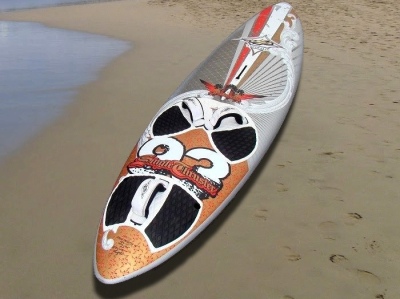
In super light winds today (13-17 knots) I got to try two more versions of the Single Thruster.
The 93L, with 20cm + 10cmx2 setup, it did feel a little bit bigger than the 82 but quite draggy in light winds. Takes some wind to get it to lift.
Definitely overfinned for light underpowered days.
The jibe and surf felt similar to the smaller version with more backfoot because the volume was added in the middle and the nose, my take is to keep it as reactive.
Then I tried the 99L version and it felt much bigger with more volume again under the mast foot, it made the rail mid-section fat under my hand. I tried it in single mode with my 22.5 fin. The board was slightly more free, but not necessarily a great early planer, the cause was the lack of volume in the back. The best way to plane early is to ride a swell, but it won't go take off as fast as a fsw in the light, it has a more "fragile" take-off which can get upset more easily than a board with more rear float.
Now, they all tracked great, they aren't as technical to ride as my Starboard Acid, the tri-fin setup makes it go upwind slightly better. I'm comparing 20cm 10cm x 2 and 20cm + 9cmx2 with single 22.5cm. The 20cm of the tri needs to be sized down to be closer to a true thruster. I bet they ride fine with just the 20s!
Anyway, so for a light wind board, I think it'd make more sense for me to look at something with more volume out back to help with lulls, early planing.
2010 Starboard Quad 86L 60.5cm top ⇧
The quad had its stock 16 x 2 fronts + 12 x 2 rears combo in their carbon version.
It has a more even volume distribution which resembles more freewave boards so I was expecting better slogging and more comfortable planing. It also felt quite light. Footstraps: Most of you know my obsession on footstraps (you can check out my detailed video in my signature) and the Starboard Drake footstraps from 2010 are pretty terrible to me. First I can fit about two fingers beside my foot when inside and I wish they were more ergonomic feeling. In 2011, they moved onto their "Dakine Primo" type strap with an adjusting scale which helped some. The JP footstraps with the "gel" type of padding felt wonderful, solid and they hold my foot perfectly in place. Slogging: The first thing I noticed about the Quad was that it slogged itself! Of course it's quite wide, but it feels well balanced and never once nose dove on me even when not careful with footing. It did feel like it was a size larger. My Acid 86L doesn't float nearly as well. On the JP, the volume is definitely a little bit more forward. It gets good firm contact with the white water to pop over it. It was also easy to slog, but maybe felt a bit more "tilty" and rides a bit lower in the water. Overall the board feels a bit smaller than 93, it's true of the 2012 82 model as well. And, from what I read true as of newer versions too. Planing: I was expecting quite a bit of drag from the Quad after experiencing the drag from trying out Tris, well I was wrong. The Quad popped on a plane more suddenly than the 93 JP. The JP drags for a while and needs to accumulate speed before taking off. I wonder if it can be addressed with a different fin setup (owners feedback on this?). The Quad felt like it was pre-planing farther out of the water, so the JP had to do more work to get out of the water. Could very well be the more volume/width out back from the Quad.
It has a more even volume distribution which resembles more freewave boards so I was expecting better slogging and more comfortable planing. It also felt quite light. Footstraps: Most of you know my obsession on footstraps (you can check out my detailed video in my signature) and the Starboard Drake footstraps from 2010 are pretty terrible to me. First I can fit about two fingers beside my foot when inside and I wish they were more ergonomic feeling. In 2011, they moved onto their "Dakine Primo" type strap with an adjusting scale which helped some. The JP footstraps with the "gel" type of padding felt wonderful, solid and they hold my foot perfectly in place. Slogging: The first thing I noticed about the Quad was that it slogged itself! Of course it's quite wide, but it feels well balanced and never once nose dove on me even when not careful with footing. It did feel like it was a size larger. My Acid 86L doesn't float nearly as well. On the JP, the volume is definitely a little bit more forward. It gets good firm contact with the white water to pop over it. It was also easy to slog, but maybe felt a bit more "tilty" and rides a bit lower in the water. Overall the board feels a bit smaller than 93, it's true of the 2012 82 model as well. And, from what I read true as of newer versions too. Planing: I was expecting quite a bit of drag from the Quad after experiencing the drag from trying out Tris, well I was wrong. The Quad popped on a plane more suddenly than the 93 JP. The JP drags for a while and needs to accumulate speed before taking off. I wonder if it can be addressed with a different fin setup (owners feedback on this?). The Quad felt like it was pre-planing farther out of the water, so the JP had to do more work to get out of the water. Could very well be the more volume/width out back from the Quad.
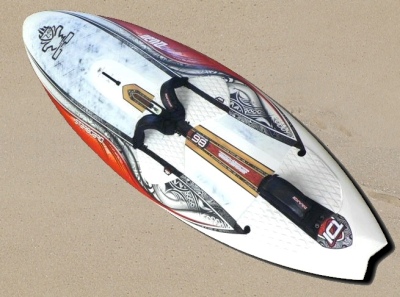
Once on a plane, the Quad felt fast and this is in very light winds (12-16 knots and 5.4 for 70kgs). It accelerated nicely off of the slope of some chop, goes upwind without issues. The JP on the plane is nice too. Neither board slows down dramatically in lulls and round upwind, they track wonderfully which gives me the confidence I like when crossing the reef waves. The Quad did feel fast and I know from earlier testing that the JP does feel like reaching and settling for a top speed.
Waves:
Without much wind, I slogged quite a bit through the waves. I picked up my first wave on the quad and similarly to taking off on a plane, the board nearly instantly planed once the wave provided some slope. I moved back in the straps and started my turn, when oops "something" caught, but then it took off and zoooom, it flew down the wave with the most speed I have ever experienced.
The turn was smooth controllable with a good bite.
The carve felt similar to the type of carve I can get from my Acid except that it was easier to steer with finer input. As opposed to other boards, the Quad felt "floaty" meaning that it feels forgiving, it's soft on the water.
As I got out of the waves, picked up the plane again and did my first jibe, now the same "catchy" thing happened. Only then I knew what it was. I was pressuring the rear of the board too much and slid some. So, I had to change my stance a bit, be less aggressive with my rear foot and started to commit more the whole rail of the board, wow did it feel nice!
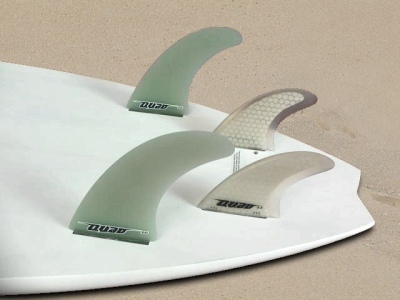
That's what the board wanted, it might have more fins but less side-to-side leverage and likes to have its rail fully engaged. In the 2011 Quad video by Peter Hart (found on youtube), he describes exactly that and says to take it easy on the rear foot.
One thing, I'm bad at but it can be convenient sometimes, is to power up the board by pulling on the rear arm to give a little push to the board when dropping in on small side-on waves. The board didn't seem to like that at all. I felt like completely depowering the sail and lean forward to engage the rail. Then, the board was free to glide and accelerate.
At the cut-back, the four fins feel like they are all grabbing water to throw up and out, definitely feels pretty good!
Going out with the JP, it may have felt a little more secure to go through the white water with a bit more volume up front, although this is hard to review unless I spend more time on the water.
Settling in the straps at the drop-in, it has a more firm response and isn't bothered by heavier input, the speed is quite nice down the wave, it's more of a back foot weighing action with a nice carve. The fins provide more grip than the Quad so it's more secure, but maybe not as responsive. The Quad has more speed, I wonder what happens in larger waves, my take is that the added grip and narrower width of the single thruster would be a plus in terms of control and confidence.
Photo: Rider setting up for a push loop at Encuentro during the Master of the Ocean 2015 competition.
Jibes:
Another point about the Quad, when we say that a board is fast down a wave (and headed the other way so particularly useful in side-on conditions), it's also valid at the jibe. When turning the board keeps its momentum which makes it easier to complete jibes and plane through them, exactly what one of the video reviewers said. It almost feels like it springs out of the jibe. This, I believe is due to having more rear volume, freestyle wave boards also do that, but tend to struggle with the chop. The Quad is easier to control and turns more sharply.
Volume and Performance 2 top ⇧
How does it compare to a loose 105L freeride?
At the end of the day, I took my 105 out to compare. I have really enjoyed my 105 since new (2006!). The board is a bit slow, but stays in control in high winds, responds well to aggressive turns, and has good float. But for the first time ever, dropping in on a small wave I thought my 105 was terrible! The board slowed down as I was "waiting" for the lip like it had put on the brakes, which prevented me from reaching sections more "behind me."
The Quad 86L which has a width of 60.5cm versus my 105L 63cm felt faster to plane and immensely faster on a wave. My take is that it would be too big with a 5.0 for my size, which is exactly what I heard from online reviews as well. It sizes quite large.
Jumps: Unfortunately, I didn't have enough planing speed to test the jumping ability of the Quad, reviews describe it as a good jumper, but one has to be wary of the width and angle the board appropriately in the air.
As tested earlier, the JP jumps are nice and easy to control, quite reassuring.
For my use and size, the quad could be a great low wind board and the 82L JP a great high wind one. One sizing up and the other down would complement each other quite nicely.
For intermediate days, I could set the 5.4 on the 82 or a 5.0 on the 86, have four combos, possibly even riding the JP with a single fin too.
The JP is narrower which gives me better trim control, but needs more wind to slog comfortably, the Starboard wider and looser would give me more productivity in lighter conditions and more comfort when slogging.
And finally this Quad definitely has its place in the bump & jump category as it's fast and quite forgiving.
2010 Fanatic NewWave Twin 86L 57.5cm top ⇧
Conditions::
Weaker 5.0 (Got better little by little), thanks Club Mistral for letting me try their 2010 Fanatic NewWave Twin 86L.
The board had excellent reviews, 86L but 57cm wide, it feels quite a bit smaller than 86. I was semi-powered to powered 5.0. My first impression was that the tail was small and I needed to make sure I kept my weight forward and stay well centered.
Planing Ride, Speed and Jumps:
The board being a little narrow took some wind to take off, but then showed a nice speed. It was nimble, reactive, and jumped well, on the flip side it was quite technical to ride over big chop.
In this snapshot you can see how much tail is in the water and yet I'm nose diving in the chop while planing. This shows that the board needs attention when sailing along and will just not auto-pilot. It wasn't nearly as skatey as the Evo I tried previously, but still lacked drive for my application. The tail just doesn't carry enough power to cruise through lulls when sailing underpowered or hitting wind shadows.
Surf:
On my way back I tried surfing a few swell slopes and wasn't impressed with how quick it was, actually it felt very similar to riding a (too) small single. It didn't pick up speed or kept its speed down the wave as much as the Single Thruster or the Quad. It also didn't correct as quickly as I thought it should at the bottom turn. Now this is in slower waves, a more powerful wave with a cleaner face which generates more speed will certainly fit the board better or maybe for someone with more advanced skills.
At the top turn, depending on where the fins sit, they may break loose, the board flattens and slides. Again, I didn't find it much different from riding a small fin. On the snapshot above you can see the board sliding flat on the peak. This can be nice, but can also require more effort to get back into the wave, depends on style, timing, etc.
The conditions that day were really tough, lots of current, it wasn't pretty, quite big too. I wish I had tried it in proper waves, but since I need a board that can drive me through wind shadowed side-on waves, at my current level I am not willing to fight an unstable planing ride especially when the board isn't at its best in sloppy waves too!
Upwind ability:
Also, it took me a couple of rides to get back upwind while I had only done a couple of turns, on the Quad, I could do many turns and would end up at the same point without making a particular effort to head back upwind. That said, the Quad is quite over finned!
Boardseeker's review was pretty much dead on and this thread confirms my findings:
http://forums.boards.mpora.com/[...]newwave-twin-86
But what causes the ride to be technical?
2014 Angulo Chango 73L 54cm top ⇧
To confirm that a board can be technical even though its volume is higher, I went on and tried a 2014 73L 54cm Angulo Chango. It's the smallest board I have ever sailed both in terms of volume and width. Despite the wind being light for such a board with my weight (70kgs), the volume is distributed out back so it isn't as technical as the numbers suggest. A 21.5cm fin was fitted on it, which was much too big for the board but regardless...
The board felt like a soft freewave, quite directional, wide tail, fast, the footstraps were tight and I didn't want to mess with the owner's adjustments. I tried to surf one swell and it felt it was quite slow to turn.
Probably a good board for bigger guys in super strong conditions or just bump & jumping around. I found that the board did bounce a bit at the jibe, but a light weight guy here rides it and always duck jibes it without issues.
I ended up the most upwind of all boards tested today! The board tracks straight, had a soft touch, was easy to ride without burying rail or nose.
Going back on my troublesome Acid
2016 Angulo Triumph 89L 60cm top ⇧
General Comments:
For 89L, the board feels pretty light and quite nice looking with lots of colors.
236cm length with 60cm width. Quality seems one level up from popular brands, the board is
a few years old and the pads are still very grippy and the straps look new.
Weight balance is quite forward when carrying, it's somewhere between front strap and mast track.
The board feels a bit plumb with sharp rails. The rear stays wide very far.
The nose is super pointy, the tail is swallow which is my favorite on bigger boards.
Settings:
The stance is very narrow! I'm 5'8" and set front strap back one hole from the front and rear strap all the way back.
Set up with my 4.7, I set the mast foot all the way back towards the front straps.
Footstraps: Nearly identical to Fanatic's they are light and feel a little elastic.
Double hole inserts both front and back.
Fin: The US box fin 24cm is nearly identical to my Sideon fin which is 23cm.
It's quite wide at the base, so powerful, drivey and a bit stiff.
It's also set quite far back in relation to the rear strap.
I set it all the way forward to have the front edge centered under my foot.
Because of the use with my 4.7, I changed it for my 23cm.
Slogging:
Despite the volume being set quite forward over the center of the board, the rear (probably due to extra width)
offers plenty of support and buoyancy. Right away the board felt very directional.
Its pointy nose works well going over white water, the board remains composed.
Planing Start:
The board is eager to go, release is progressive and positive.
Each sail pump generates speed which is maintained even in lighter winds.
Planing:
Board feels very directional is pretty comfortable given the width.
It feels more like a freewave than a wave in terms of drive and will run very deep into the lulls.
The original fin coupled with the board shape make it a bit difficult to adjust and trim, it'll just run
and plough through rough terrain a bit like a slalom board would.
Board's speed is good, it's very productive.
Chop:
The back does slap a bit underfoot but the board's ride is overall smooth.
It's more flexy than my Kode Wave Carbon.
Jumps:
Backloops and high jumps feel the safest secured by the directional nature of the beast.
Lacked a bit of liveliness for spin loops.
Jibes:
With the nice wind and extra rear width I managed many planing jibes especially on the way back where it's actually
choppier. Now the arc is quite a bit defined by the shape. Similar to bottom turns, it seems to have only one turning
radius angle. Would benefit from a smaller fin or... a heavier rider :) !
Tacks:
The length, forward volume, and overall width, make tacking comfortable except for the directional nature of the board
even when slogging. This makes pivoting a bit slower as if the mast track was too far forward (but it's not).
Wave Riding:
This was an interesting feeling. The board seems to be 100% back foot. This means that the rail will feel stiff
and locked up when trying to turn over the front foot. A bit of the same backside where it'd stall a bit.
So it encourages commitment and strong timing as it'll be technical to compensate problems or do some fine adjustment
in the turns. It'd possibly be better with a heavier rider or a heavy backfooted riding style.
Conclusion:
I would recommend this board for someone privileging safer longer arc turns and all around riding.
Easy passive and directional planing. Comfortable chop ride, quality fittings.
Multi-fin Thoughts top ⇧
Finally, I changed to my Acid from which I had backed up the fin a touch, more towards the center. It didn't feel back at all. Then I was more powered, the surf felt really nice on it with full rail turns. However, it slows down a lot before the top turn, this is a problem in side-on and where the Quad is so much better. The board's tracking isn't as bad as the Fanatic, but its speed is slower, this is hurting jumps, planing loss threshold and getting to harder to reach peak sections. I would probably like the board better in its 80L version as it does feel long and just "big."
Preferred boards:
So after testing various boards, for my skill level, for what I want to do right now (surfing as much as possible, hitting the lip, off-the-lip aerials and loops) and the type of conditions I sail, I liked the all-around wave boards the best. The Starboard Quad for a light wind application, maximum wave speed, early planing, mushy water performance including white water, and its stability. The JP Single Thruster for its great jumping, a size that I feel I can handle, speed on a wave with a very secure grip.
Least preferred:
I found the NuEvo, the Acid and the NewWave Twin to be the most technical boards. In the volume I tried probably better suited for someone heavier or better skilled than me.
Multi-fin thoughts:
I had always been fan of riding the smallest fin possible on any board. Basically go as low as I can until spin-out becomes an issue. This allowed greater speed, maximize maneuverability, and help with very short turns. However, it does cost some upwind reaching angle and this is when the side fins come into play. They help getting back the angle that was lost and add grip.
In a side-on application, a board must turn sharply and quickly, the longer it takes to turn the more speed is lost and the more upwind we'll need to run. Waves size and speed also play a role. A multi fin can transform a slow mushy wave into a delicious surfing ride!
Multi fins also help with securing the carve at the bottom turn, while a small single can more easily be upset by chop or user error, a thruster will carve the turn slicing the water with immense grip, it's an amazing feeling.
As far as twin fins go, in a light wind side-on application, I found that they lacked a bit of upwind ability to compete with quad or tris. Sure they are looser and quicker to turn, but the ride over heavy chop doesn't feel as planted. For a rider with more skill, more wind or willing to put up with the technical ride, they can be rewarding though.
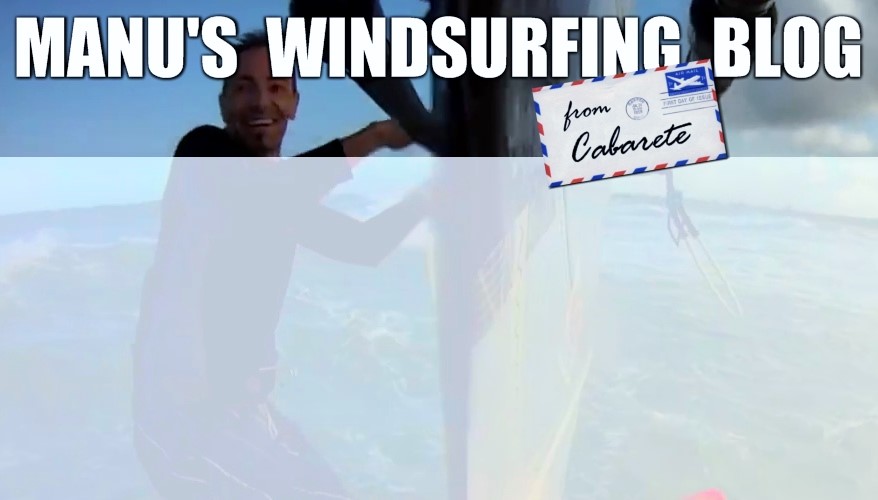








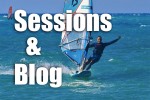
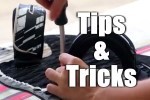

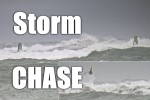
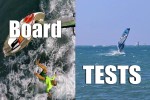

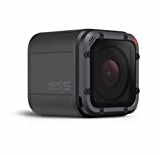
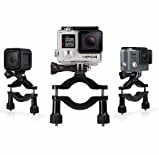

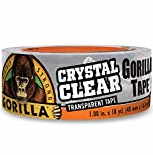
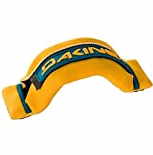

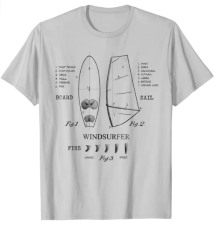
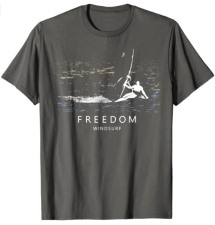
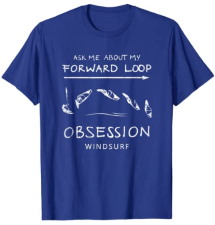
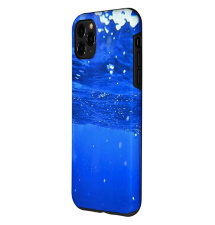
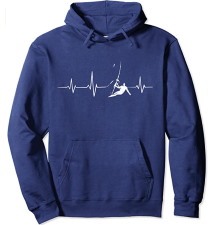
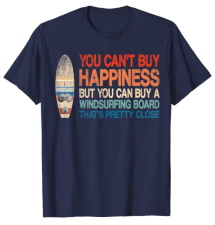
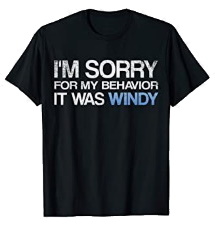
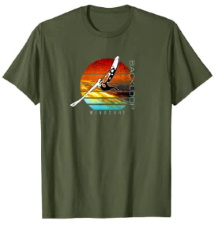
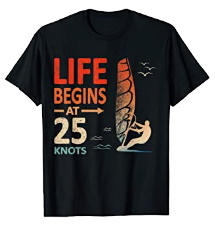
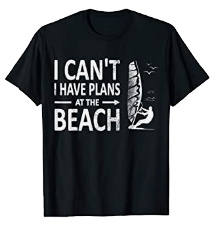
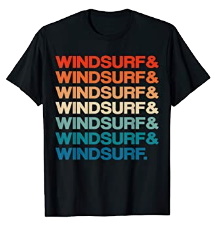
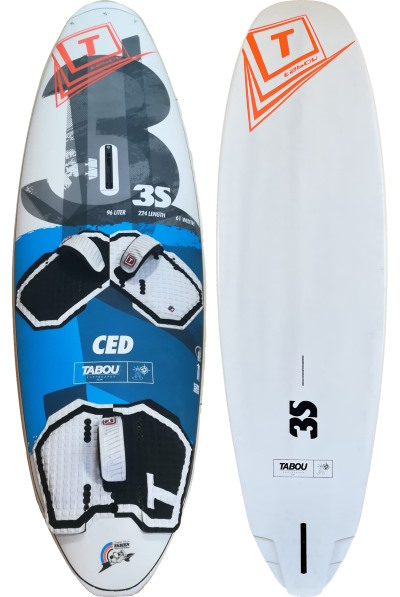
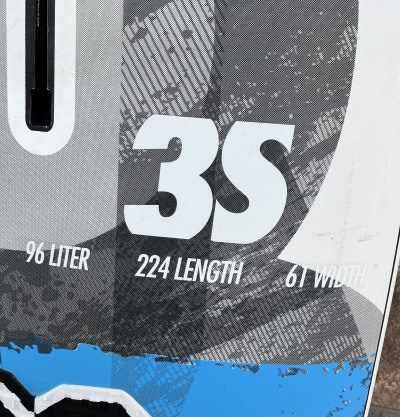

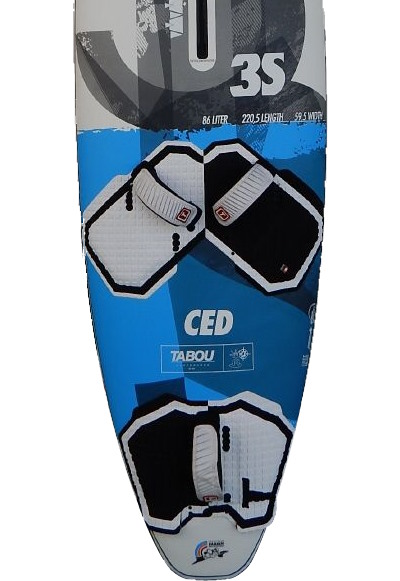
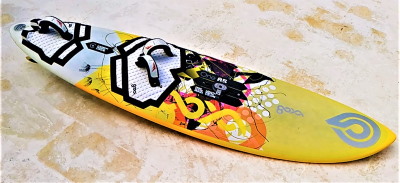

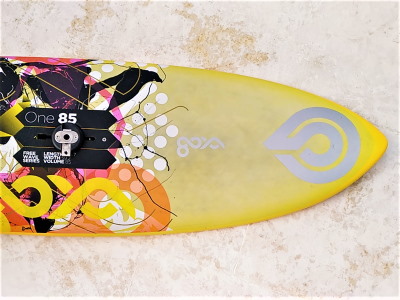
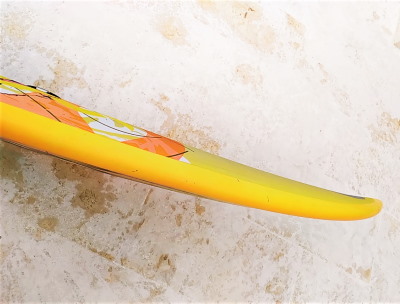
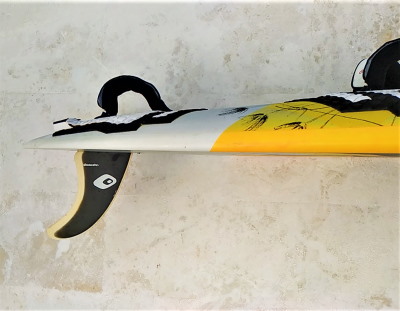
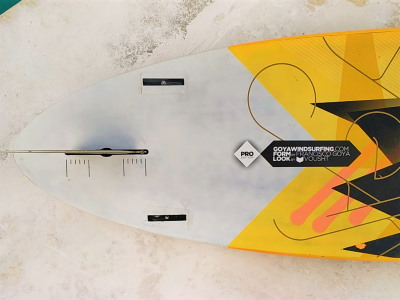
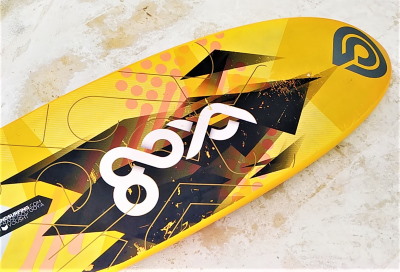
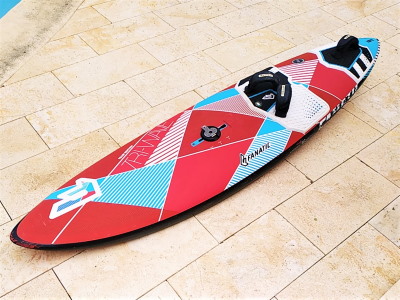
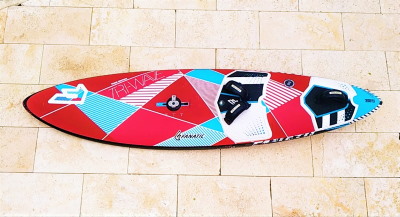
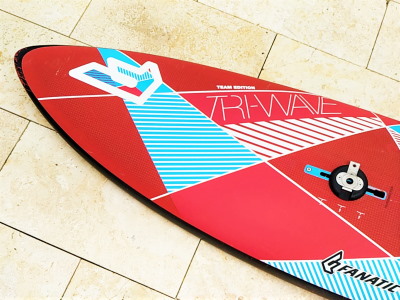
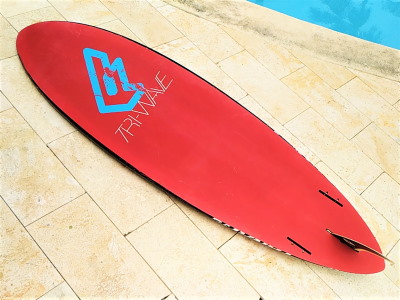
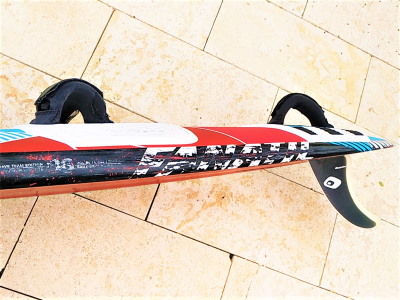
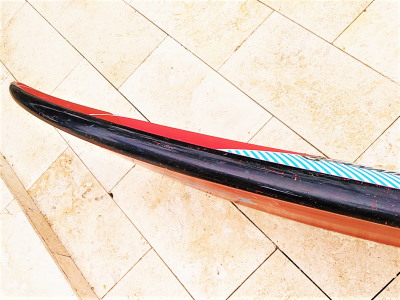
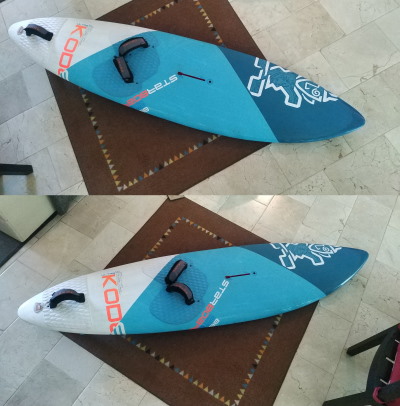
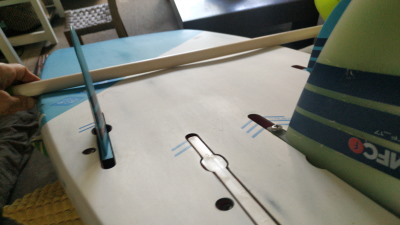


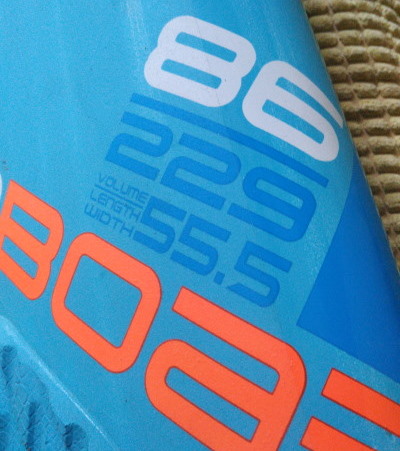
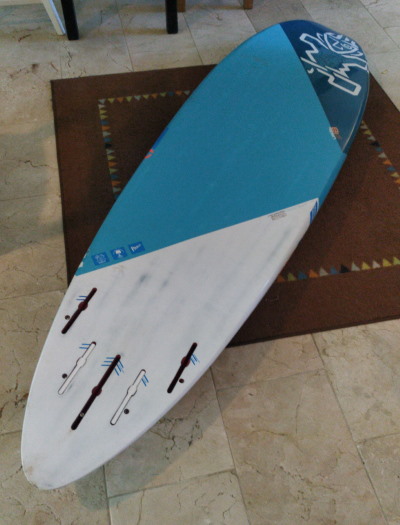


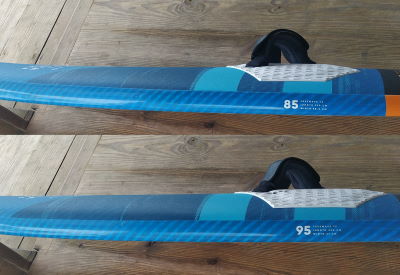
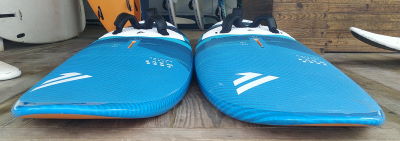
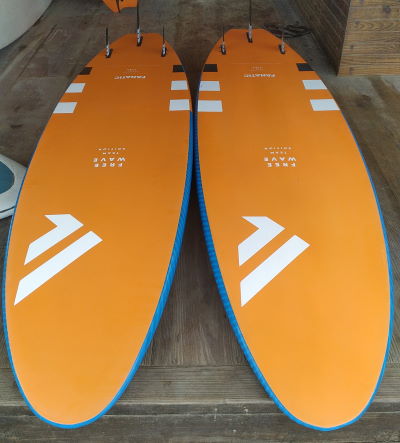
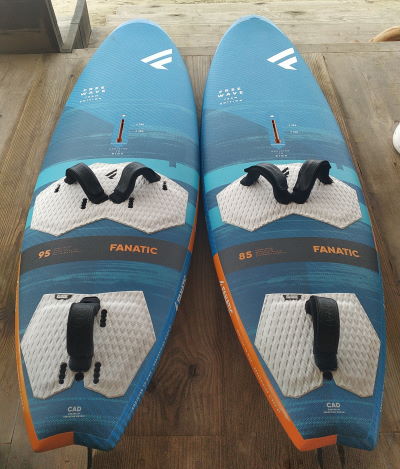
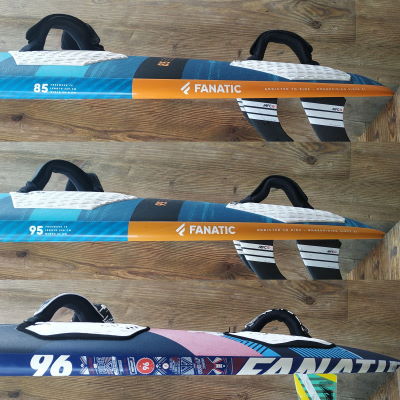
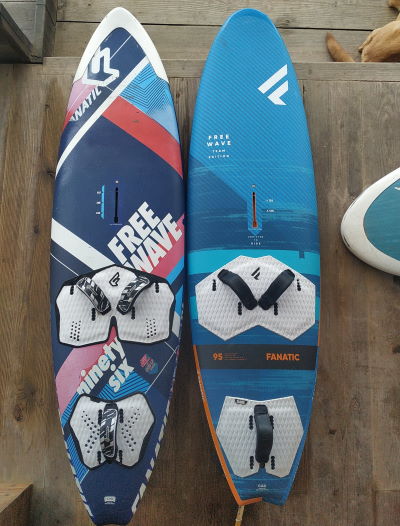
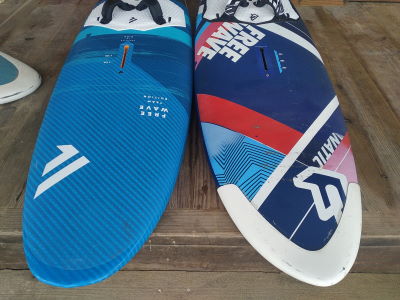





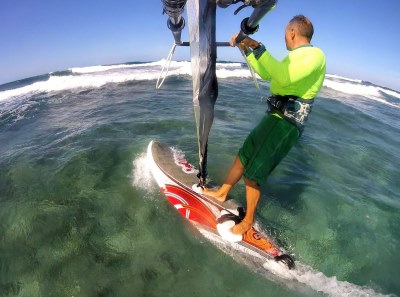
.avi_snapshot_00.03_[2018.04.08_15.54.45]-sm.jpg)
